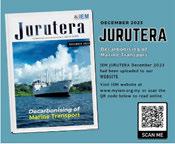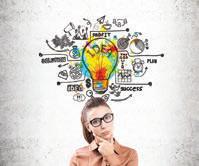JURUTERA











3,200/page
3,200/page
The publisher reserves the right to edit, revise or reject any advertisement deemed unsuitable or inappropriate. •
This one-time-only special rate o er is for new advertisers.
Space availability is subject to booking on a first-come-first-served basis.
Clients will provide ready-to-print artwork in PDF format with 300dpi.
Full page: 210mm x 297mm, 3mm extra bleed sizes for 4-sided.
Advertising space must be utilised before 30 June 2024.
*Please note that the above rate will be subjected to 6% SST. For overseas advertisers, an additional 25% will be charged.
Rate shown above excludes 15% advertising agency commission.
Payment term: Full advance payment.
Artwork submission deadline is on (or before) the 1st week of the prior month of publication.
After the material deadline, no cancellation or alteration to the advertisement will be entertained.
Any cancellation after signing the advertising order will result in a 50% penalty charge.
Name of Company: Address: Tel:
Publica�on month/s:
Company’s Stamp & Authorised Signature
JURUTERA has an estimated readership of 200,000 professionals. Our esteemed readership consists of certified engineers, decision making corporate leaders, CEOs, government officials, project directors, entrepreneurs, project consultants, engineering consulting firms and companies involved with engineering products and services. Circulation & Readership Profile
(s):
Date
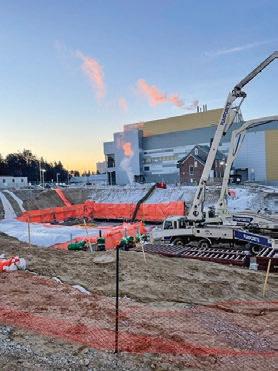
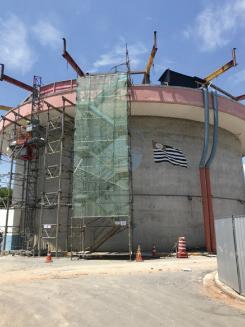
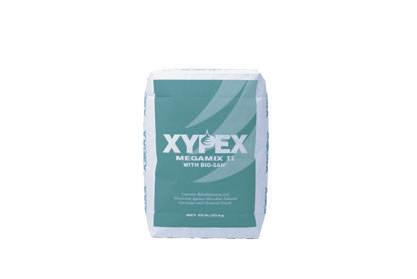

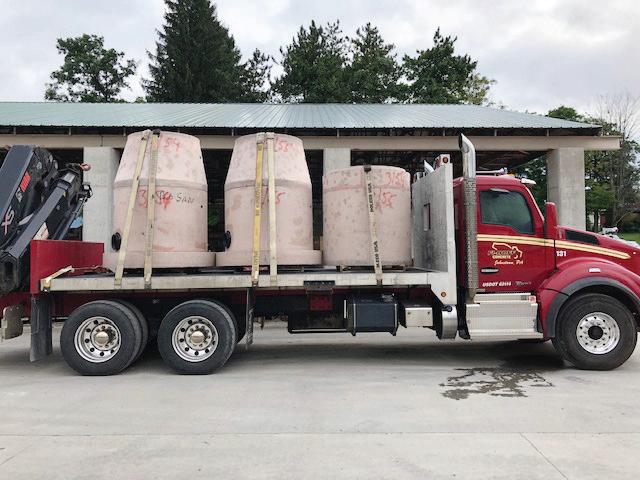
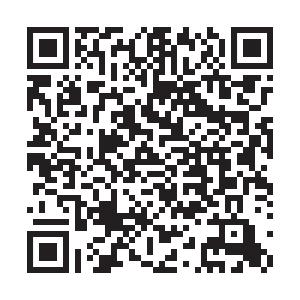




















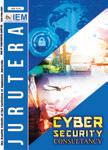


MAJLIS BAGI SESI 2023/2024
(IEM COUNCIL SESSION 2023/2024)
Yang Dipertua / President
Ir. Prof. Dr Norlida binti Buniyamin
Timbalan Yang Dipertua / Deputy President
Ir. Prof. Dr Jeffrey Chiang Choong Luin
Naib Yang Dipertua / Vice Presidents
Ir. Mohd Khir bin Muhammad, Ir. Ts. Prof. Dr Tan Chee Fai, Ir. Abdul Razak bin Yakob, Ir. Yau
Chau Fong, Ir. Dr Siti Hawa binti Hamzah, Ir. Fam Yew Hin, Ir. Chen Harn Shean
Setiausaha Kehormat / Honorary Secretary
Ir. Prof. Dr Zuhaina binti Zakaria
Bendahari Kehormat / Honorary Treasurer
Ir. Assoc. Prof. Dr David Chuah Joon Huang
Bekas Yang Dipertua Terakhir / Immediate Past President
Ir. Ong Ching Loon
Bekas Yang Dipertua / Past Presidents
Y.Bhg. Academician Tan Sri Datuk Ir. (Dr) Ahmad Zaidee bin Laidin, Y.Bhg. Dato’ Paduka Ir. Hj. (Dr) Keizrul bin Abdullah, Y.Bhg. Tan Sri Dato’ Seri Academician Ir. Professor Emeritus Dr Chuah Hean Teik, Y.Bhg. Dato’ Ir. Lim Chow Hock, Ir. Dr Tan Yean Chin
Wakil Awam / Civil Representative
Ir. Tu Yong Eng
Wakil Mekanikal / Mechanical Representative
Ir. Ng Yong Kong
Wakil Elektrik / Electrical Representative
Ir. Mohd. Aman bin Hj. Idris
Wakil Struktur / Structural Representative
Ir. Dr Tan Kuang Leong
Wakil Kimia / Chemical Representative
Ir. Dr Chong Chien Hwa
Wakil Lain-Lain Displin / Representative to Other Disciplines
Ir. Assoc. Prof. Dr Wong Yew Hoong
Wakil Multimedia dan ICT / ICT and Multimedia Representative Ir. Assoc. Prof. Dr Lai Khin Wee
Wakil Jurutera Wanita / Women Engineers Representative Ir. Noorfaizah binti Hamzah
Wakil Bahagian Jurutera Siswazah / Young Engineers Section Representatives Mr. Muhammad Ashiq Marecan bin Hamid Marecan, Grad. IEM, Mr. Lim Yiren, Mr. Darshan a/l Balasubramaniam, Grad. IEM, Mr. Ooi Wei Chien, Grad. IEM, Ms. Ong Ye Shian, Grad. IEM Ahli - Ahli Majlis / Council Members Ir. Dr Vigna Kumaran a/l Ramachandaramurthy (casual vacancy for Ir. Dr Siti Hawa binti Hamzah for 1 session), Ir. Assoc. Prof. Dr Lee Tin Sin, Ir. Mah Way Sheng, Ir. Sreedaran Raman, Ir. Lee Cheng Pay, Ir. Dr Kannan a/l M. Munisamy, Ir. Dr Siow Chun Lim, Ir. Wong Chee Fui, Ir. Ts. Assoc. Prof. Dr Hum Yan Chai, Ir. Tiong Ngo Pu, Ir. Rusnida binti Talib, Ir. Prof. Dr Lau Hieng Ho, Ir. Dr Muhammad Azmi bin Ayub, Ir. Arul Hisham bin Abdul Rahim (casual vacancy for Ir. Fam Yew Hin - for 2 sessions), Ir. Razmahwata bin Mohd Razalli, Ir. Simon Yeong Chin Chow, Ir. Dr Chan Seong Phun, Ir. Yam Teong Sian, Ir. Kwok Yew Hoe, Ir. Dr Lee Choo Yong, Ir. Sharifah Azlina binti Raja Kamal Pasmah, Ir. Ts. Dr Wan Syakirah binti Wan Abdullah, Ir. Dr Mui Kai Yin, Ir. Shamil bin Abu Hassan, Ir. Wan Rizaluddin Abdullah bin Wan Ali, Ir. Prof. Dr Lam Wei Haur (casual vacancy for Ir. Prof. Dr Zuhaina bt Zakaria for 3 sessions)
Ahli - Ahli Majlis Jemputan / Council Members by Invitation Ir. Lai Sze Ching, Ir. Gopal Narian Kutty, Y.Bhg. Dato’ Prof. Ir. Dr Mohd Hamdi bin Abd Shukor Pengerusi Cawangan / Branch Chairman
1. Pulau Pinang: Ir. Chan Wah Cheong
2. Selatan: Ir. Thayala Rajah s/o Selvaduray
3. Perak: Ir. Assoc. Prof. Dr Nursyarizal bin Mohd Nor
4. Pahang: Ir. Ab Rahman bin Hashim
5. Kedah-Perlis: Ir. Roshasmawi bin Abdul Wahab
6. Negeri Sembilan: Ir. Shahrin Amri bin Jahari
7. Kelantan: Ir. Ts. Hj. Abrizan bin Abdul Kadir
8. Terengganu: Ir. Mazlan bin Che Ku Ahmad
9. Melaka: Ir. Ong Yee Pinn
10. Sarawak: Ir. Sim Hui Kheng, Stephanie
11. Sabah: Ir. Chin Tet Fu, Willy
12. Miri: Ir. Chong Boon Hui
AHLI JAWATANKUASA INFORMASI DAN PENERBITAN / STANDING COMMITTEE ON INFORMATION AND PUBLICATIONS 2023/2024
Pengerusi / Chairman: Ir. Abdul Razak bin Yakob
Naib Pengerusi / Vice Chairman: Ir. Dr Siow Chun Lim Setiausaha / Secretary: Ir. Ts. Assoc. Prof. Dr Hum Yan Chai Ketua Pengarang / Chief Editor: Ir. Abdul Razak bin Yakob Pengarang Prinsipal Buletin / Principal Bulletin Editor: Ir. Razmahwata bin Mohamad Razalli Pengarang Prinsipal Jurnal / Principal Journal Editor: Ir. Ts. Prof. Dr Teo Fang Yenn Pengerusi Aplikasi Mudah Alih IEMGo / IEMGo Mobile Application Chairman: Ir. Dr Bhuvendhraa Rudrusamy
Pengerusi Penglibatan Ahli / Members Engagement Chairperson: Ir. Rusnida binti Talib
Pengerusi Pusat Sumber / Resource Centre Chairman: Ir. Dr Kannan a/l M. Munisamy
Ahli-Ahli / Committee Members: Ir. Ong Guan Hock, Ir. Lee Chang Quan, Ir. Lau Tai Onn, Ir. Dr Oh Seong Por, Ir. Yee Thien Seng, Ir. Dr Lee Choo Yong, Ir. Ts. Dr Tan Kim Seah, Ir. Assoc. Prof. Dr Lee Tin Sin, Ir. Tu Yong Eng, Ir. Dr Nor Ilia Anisa binti Aris, Dr Sudharshan N. Raman, Grad. IEM, Ms. Michelle Lau Chui Chui, Grad. IEM, Ms. Illy Alia binti Mohd Azizan, Grad. IEM, Ms. Nyan Shu Qi, Grad. IEM
LEMBAGA PENGARANG / EDITORIAL BOARD 2023/2024 Ketua Pengarang / Chief Editor: Ir. Abdul Razak bin Yakob Pengarang Prinsipal Buletin / Principal Bulletin Editor: Ir. Razmahwata bin Mohamad Razalli Ahli-Ahli / Committee Members: Ir. Dr Siow Chun Lim, Ir. Lau Tai Onn, Ir. Ong Guan Hock, Ir. Yee Thien Seng, Ir. Dr Oh Seong Por, Ir. Ts. Prof. Dr Teo Fang Yenn, Dr Sudharshan N. Raman, Ir. Tu Yong Eng, Ir. Lee Chang Quan, Ir. Dr Lee Choo Yong, Ir. Ts. Dr Tan Kim Seah, Ms. Michelle Lau Chui Chui, Grad. IEM
Secretariat: Janet Lim, Nurul Aida binti Mustafa, Nur Illyarnie binti Rosman
THE INSTITUTION OF ENGINEERS, MALAYSIA
Bangunan Ingenieur, Lots 60 & 62, Jalan 52/4, P.O. Box 223, (Jalan Sultan), 46720 Petaling Jaya, Selangor Darul Ehsan.
Tel: 603-7890 0130 Fax: 603-7957 7678
E-mail: sec@iem.org.my Homepage: http://www.myiem.org.my
Visit to Panasonic Appliance Air-Conditioning Malaysia Sdn. Bhd. CIDB Centralised Information
System: Application of CIDB Green Card, Renewal, Replacement, etc.





DIMENSION PUBLISHING SDN. BHD. [ 199701034233 (449732-T) ]
Level 18-01, PJX-HM Shah Tower, No. 16A, Persiaran Barat, 46050 Petaling Jaya, Selangor Darul Ehsan, Malaysia. Tel: +(603) 7493 1049 Fax: +(603) 7493 1047
E-mail: info@dimensionpublishing.com Website: www.dimensionpublishing.com
CHAIRMAN
ROBERT MEBRUER
CEO/PUBLISHER
SHIRLEY THAM ● shirley@dimensionpublishing.com
HEAD OF MARKETING & BUSINESS DEVELOPMENT
JOSEPH HOW ● joseph@dimensionpublishing.com
PRODUCTION EDITOR
TAN BEE HONG ● bee@dimensionpublishing.com
CONTRIBUTING WRITERS
PUTRI ZANINA ● putri@dimensionpublishing.com
HANNA SHEIKH MOKHTAR ● hanna@dimensionpublishing.com
SENIOR GRAPHIC DESIGNER
SOFIA HANIS ● sofia@dimensionpublishing.com
GRAPHIC DESIGNER
NICOLE THENG ● nicole@dimensionpublishing.com
ADVERTISING CONSULTANTS
THAM CHOON KIT ● ckit@dimensionpublishing.com
ACCOUNTS CUM ADMIN EXECUTIVE
YEN YIN ● yenyin@dimensionpublishing.com
For advertisement placements and subscriptions, please contact:
DIMENSION PUBLISHING SDN. BHD. [ 199701034233 (449732-T) ]
Level 18-01, PJX-HM Shah Tower, No.16A, Persiaran Barat, 46050 Petaling Jaya, Selangor Darul Ehsan, Malaysia.
Tel: +(603) 7493 1049 Fax: +(603) 7493 1047
E-mail: info@dimensionpublishing.com
Subscription Department E-mail: info@dimensionpublishing.com
JURUTERA is published and printed monthly by Dimension Publishing Sdn. Bhd.
JURUTERA MONTHLY CIRCULATION: OVER 50,000 MEMBERS
Submission or placement of articles in JURUTERA could be made to the:Chief Editor THE INSTITUTION OF ENGINEERS, MALAYSIA (IEM) Bangunan Ingenieur, Lots 60 & 62, Jalan 52/4, P.O. Box 223 (Jalan Sultan), 46720 Petaling Jaya, Selangor. Tel: +(603) 7890 0130 Fax: +(603) 7957 7678
E-mail: pub@iem.org.my or sec@iem.org.my IEM Website: http://www.myiem.org.my
© 2024, The Institution of Engineers, Malaysia (IEM) and Dimension Publishing Sdn. Bhd.
PUBLICATION DISCLAIMER
The publication has been compiled by both IEM and Dimension with great care and they disclaim any duty to investigate any products, process, services, designs and the like which may be described in this publication. The appearance of any information in this publication does not necessarily constitute endorsement by IEM and Dimension. There is no guarantee that the information in this publication is free from errors. IEM and Dimension do not necessarily agree with the statement or the opinion expresssed in this publication.
COPYRIGHT
JURUTERA Bulletin of IEM is the official magazine of The Institution of Engineers, Malaysia (IEM) and is published by Dimension Publishing Sdn. Bhd. The Institution and the Publisher retain the copyright over all materials published in the magazine.
and the Publisher.
by Ir. Dr Balamurugan A. Gurunathan Chairman, Engineering Education Technical Division

In the 21st Century, most engineering students struggle to acquire sufficient understanding and knowledge to demonstrate complex engineering problems and activities. This may be due to the nature of engineering which is highly mathematical concept orientated, insufficient prior comprehension, lack of innovation in the conventional teaching and learning activities to enhance learning experiences.
One way to bridge these gaps is by introducing Artificial Intelligence (AI) in engineering education. AI creates innovative teaching and learning materials in a very efficient way that can help engineering educators to improve students’ learning and engagement. In addition, AI can also be used to generate practice problems which will help students prepare for time-constrained assessments such as tests and exams.
However, as easy as it may sound, to fully implement AI in education requires various consideration, such as ethical principles and quality of graduates, to name a few.
With this in mind, Artificial Intelligence in Engineering Education is aptly chosen as the theme for this issue of JURUTERA , to benefit students, educators and stakeholders.
by Ir. Razmahwata Mohamad Razalli Principal Bulletin Editor Finance department
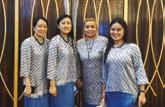
These four women are the guardians of IEM finance. They ensure that all payments made are in line with IEM’s approved processes and budget. They overcome difficulties in pursuing the collection of revenues due and chase tardy submissions of claims. To enhance frictionless payment, they are always having to adapt to different payment platforms, for both local and international clientele. They continuously strive to keep a cheerful and courteous demeanour with those who come to the information counter to perform the necessary transactions.

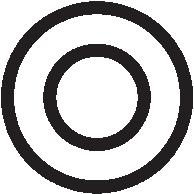


Interviewee:
Professor Dr Ho Chin Kuan
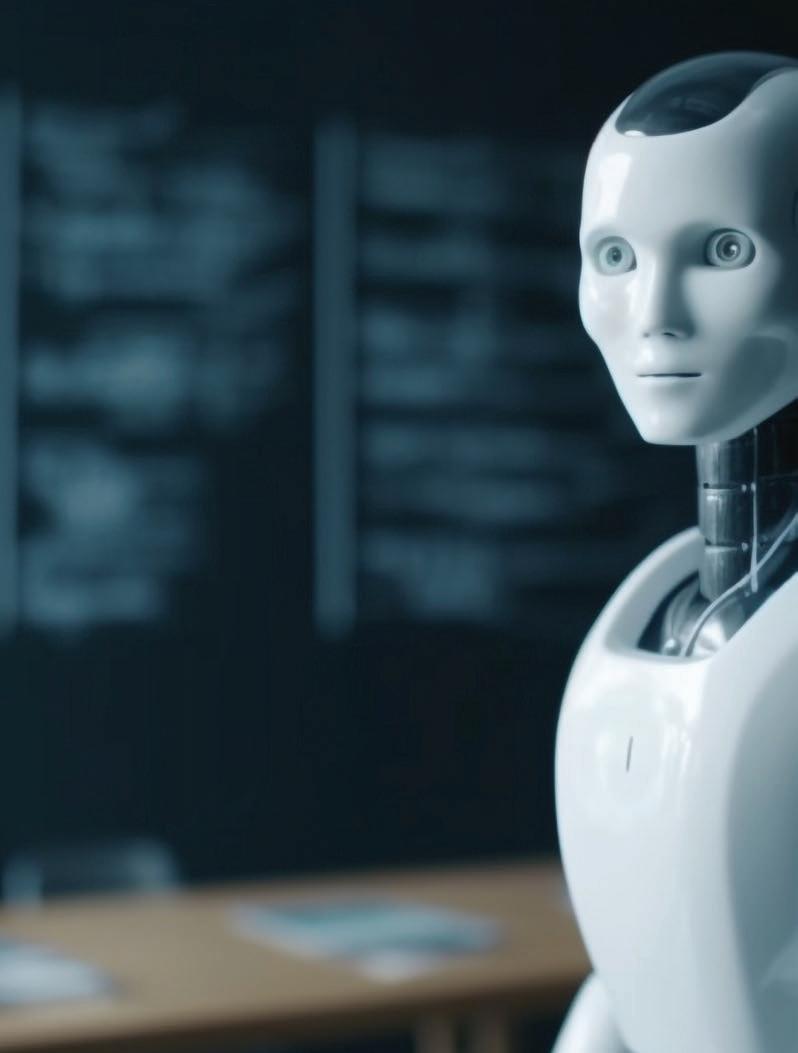
Artificial intelligence or AI offers many advantages in education, particularly engineering education. Indeed, research shows that students perform better when generative AI tools are used.
AI enhances learning experiences, prepares students for industry demands and contributes to the overall educational process. However, it may also result in an over-emphasis on technical skills at the expense of broader engineering principles and diminish critical thinking and hands-on skills. Thus, it is imperative to have a balanced approach that considers the broader context and aim of an engineering education.
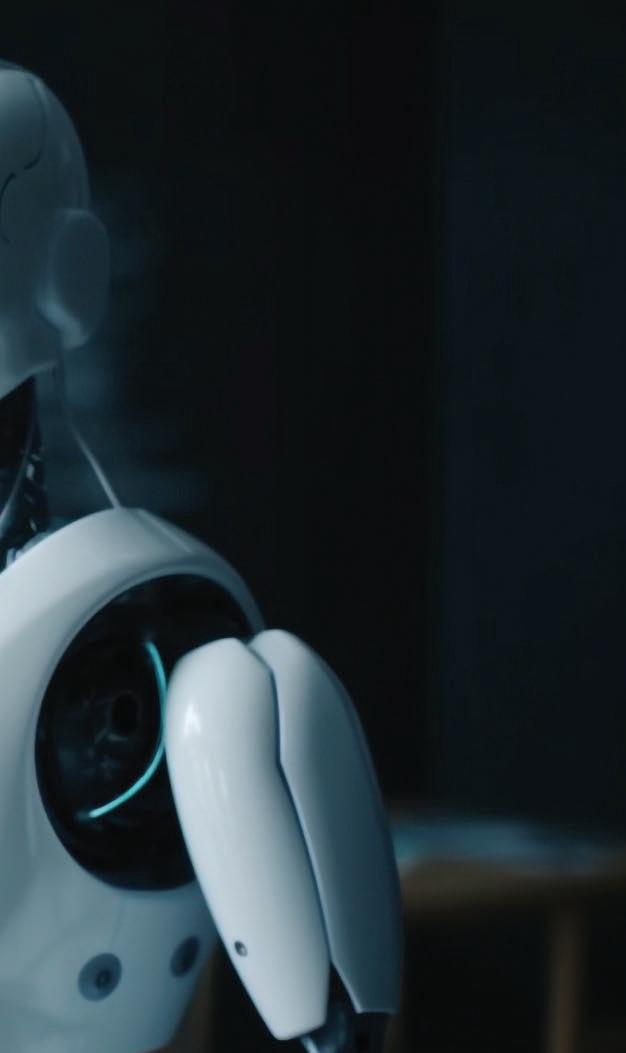
What is the current state-ofthe-art artificial intelligence (AI) and its importance in engineering education?
First, let us understand what AI is. It is a system (software and typically includes hardware) that aims to mimic or go beyond human abilities. AI is not new. For decades, computer scientists had attempted to make machines that would be as intelligent as humans. To fully appreciate the potential of AI today, it is helpful to understand the historical development of AI and computing. In 1945, John von Neumann formalised the architecture of contemporary computers. This is now known as the Von Neumann architecture. In his seminal 1950 paper, titled Computing Machinery & Intelligence, Alan Turing considered the question, “Can machines think?”.
The work of Turing and von Neumann laid the foundation for the development of computers for implementing AI algorithms. The conceptual ideas they introduced, notably the universality of computation and the architecture of modern computers, provided the necessary tools and framework for the growth of AI R&D. Their foundational work deeply influenced the fields of theoretical computer science and AI. The term AI was commonly attributed to John McCarthy of MIT, who introduced the term at the Dartmouth Conference in 1956, which was considered by many to be the birthplace of AI as a formal discipline.
The language and image recognition capabilities of AI systems have improved rapidly since 2010, due to the availability of scalable and affordable computing power. Between 2015 and 2020, numerous
research papers reported that AI systems performed better than humans at specific tasks within predetermined operating conditions. A key milestone was the release of ChatGPT, a conversational generative AI tool which acquired one million users in just five days. The state-of-the-art generative AI is now multi-modal, accepting both text and image in prompts.
AI offers specific advantages in engineering education; it enhances learning experiences, prepares students for industry demands and contributes to the overall educational process. I will delve into the details as I respond to subsequent questions. There are 3 main key areas in which AI can play an essential role in engineering education:
1. Real-world problem solving:
AI can solve complex, real-world engineering problems. Integrating AI into engineering education enables students to work on projects that mirror challenges they will face in their careers, enhancing their problem-solving skills. This is also known as authentic learning.
2. Industry relevance:
Apart from engineering, many industries are adopting AI technologies to automate workflow and improve efficiency. Incorporating AI into engineering programmes will make students better prepared to meet industry demands and remain competitive.
3. Enhanced & personalised learning tools:
Today, numerous AI-powered tools and platforms can personalise (to a certain extent) learning experiences, adapt to the needs of individual students and provide immediate feedback.
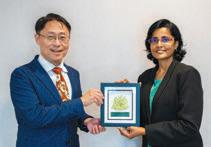
Asia Pacific University of Technology and Innovation (APU) Vice Chancellor Professor Dr Ho Chin Kuan receiving the Institution of Engineer’s Malaysia (IEM) token of appreciation for his article contribution from Ir.Ts.Dr.Dhakshyani Ratnadurai, Deputy Chairman of Engineering Education Technical Division (E2TD), IEM
Can AI make teaching more impactful by offering a personalised learning experience for engineering students?
Personalised learning is broadly based on the principle that different people have different learning styles and that everyone learns at a different pace. AI can significantly enhance personalised learning by tailoring educational experiences to the needs, preferences and abilities of an individual student. An AI personalised learning experience can, among others, take on the following forms:
• Individualised content recommendation and delivery. Algorithms can analyse a student’s learning performance and recommend relevant learning content. This may include articles, videos, interactive simulations or additional practice problems. Content delivery can be optimised by adjusting the pace of lessons, the format and difficulties in real-time. This helps students remain engaged and challenged without feeling overwhelmed or bored.
• AI can provide instant and personalised feedback on assessments. This feedback can be specific to individual mistakes, offering guidance in areas that need improvement and reinforcing correct answers.
• Personalisation through gamification. Teachers who want to gamify the learning experience
can use AI to adapt the game dynamics based on individual performance. This creates a personalised and motivating environment where students progress at their own pace while being challenged appropriately. In summary, AI enhances personalised learning by leveraging data and adaptive algorithms to tailor content, pace and support to an individual student’s unique needs and ultimately improve learning outcomes.
Can you provide examples of AI in teaching and learning from an educator’s perspective?
AI can be used to automate the grading process for certain types of assignments and assessments. This enables an educator to focus more on interpreting results, providing meaningful feedback and interacting with students.
AI-powered virtual assistants can assist in managing administrative tasks and answering common student queries (for example, chatbots). For research, AI tools can also help with literature reviews, data analysis and predictive modelling in research. AI can help to streamline research tasks, allowing a researcher to focus on interpreting results and developing new insights.
AI can assist in developing and updating course materials. There are numerous multimedia content development tools powered by AI with an easy learning curve. These tools are capable of creating quality content in a shorter amount of time. In addition, AI can recommend relevant resources and suggest improvements based on student feedback.
What are the pros and cons of integrating AI into engineering education?
Earlier, I have highlighted the advantages of AI. Though integrating AI into engineering education offers numerous benefits, there are also potential disadvantages and challenges. It’s essential to consider these aspects to ensure effective and
beneficial implementation.
For example, the integration of AI may lead to an over-emphasis on technical skills to collaborate with AI at the expense of broader engineering principles and creativity. Over-reliance on AI tools may diminish the emphasis on critical thinking, problem-solving and handson skills which are vital in engineering education. It is imperative to have a balanced approach that considers the broader context and aim of an engineering education.
Another challenge is resistance to change on the part of both educators and students who are unfamiliar with AI or who remain attached to traditional teaching methods. The successful implementation of AI requires buy-in and support from all stakeholders.
There may be skill gaps for educators to use AI tech effectively. Training educators to incorporate AI into their teaching methods may also be time-consuming and require ongoing professional development.
As with any technology field, AI is rapidly evolving and technologies can become outdated relatively quickly. This poses a challenge in maintaining up-to-date educational content and tools, requiring ongoing investment and commitment.
Implementing AI requires significant technical infrastructure and resources, including highperformance computing systems (this challenge is addressed using the cloud infrastructure) and access to advanced software. Many educational institutions, especially those with limited budgets, may face challenges in providing the necessary infrastructure. We must ensure that all students have fair access to AI tools and resources regardless of socioeconomic background.
AI also involves collecting and analysing large amounts of data. This includes prompts submitted to generative AI systems. Privacy concerns may arise, especially when dealing with student data and requires careful consideration of data protection regulations and ethical considerations.


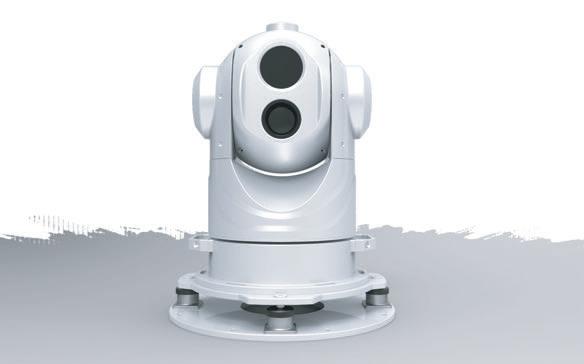

Can AI replace human intelligence to improve the quality of engineering education?
While AI has the potential to enhance engineering education significantly, it is unlikely to replace human intelligence entirely. Instead, AI should be viewed as a tool that complements and augments human capabilities in education.
AI is adept at processing data and providing solutions based on patterns, but it may struggle with tasks that require creativity, intuition and critical thinking, qualities that are crucial in engineering education.
Human educators will continue to be critical for mentorship and guidance. They provide career advice, share practical experiences and offer valuable insights beyond the capabilities of AI.
Human educators also inspire students through their love for the subject. The enthusiasm and realworld experiences which educators share, will motivate students in pursuing their interest in engineering.
Then there is bringing emotional intelligence to the learning experience. Unlike AI, human educators can recognise and respond to students’ emotional states as well as provide support, motivation and encouragement. Indeed, engineering challenges often involve ambiguity and uncertainty. Human educators can guide students through these complexities and help them develop resilience, adaptability and problemsolving skills.
How does AI affect academic performance and outcomes in engineering education?
Many research papers published recently have reported improvements in student performance when generative AI tools are used. Two essential skills that engineering students should master early on are computational thinking and programming. I want to highlight a research paper published in Computers and Education: Artificial Intelligence (June 2023) titled The Effect of Generative Artificial Intelligence (AI)-based Tool Use on Students’ Computational Thinking Skills, Programming Self-Efficacy & Motivation. The article discusses how generative AI-powered tools can transform programming education. There are two conclusions drawn from the study.
1. ChatGPT, the GenAI tool used in the study, is effective for teaching computational thinking.
2. AI enhances the programming self-efficacy and motivation of students. A motivated reader can easily find other evidence of how AI can improve student outcomes.
How is AI impacting STEM education?
AI has the potential to reignite interest in STEM education. It is a catalyst for generating children’s interest in STEM courses. A frontier within STEM itself, AI is, more importantly, becoming recognised as a tool for promoting equity among STEM students.
Building on the point of personalised learning earlier,
personalised learning ensures that students from various backgrounds, especially those under-represented in STEM, have the opportunity to succeed and reach their full potential.
Some students who wish to pursue STEM fields may encounter language hurdles. Real-time captioning and AI-powered translation technologies enable multilingual access to lectures, documents and other resources. With this technique, students can understand complex STEM topics without having to plough through language nuances.
For STEM students with disabilities, AI has the potential to be a game-changer. AI tools can offer haptic graphics or transform text to audio for visually challenged people. Students with hearing difficulties can access spoken content thanks to speech-to-text technologies. These apps facilitate their education and make it possible for all students to participate in an inclusive learning environment in the classroom.
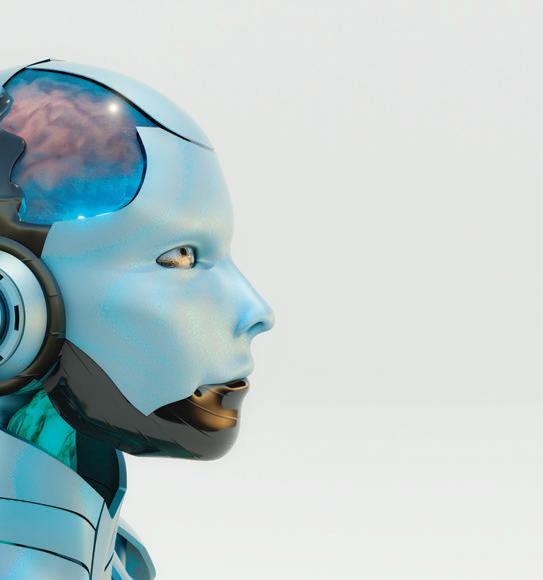
Socioeconomic and geographic limitations frequently keep children from getting high-quality STEM education. While some students can readily migrate to a STEM-focused school in a different state or city, there are those who cannot afford to do so and so, must stay in their hometown. AI-powered online platforms have the potential to close this gap by offering students access to top-notch resources, simulations and virtual laboratories anywhere in the world.
Given that AI has the potential to remove obstacles, tailor instruction and facilitate unmatched access to resources, it is evident that AI can advance student equity. Promoting fairness and inclusivity when AI is incorporated into education is critical to guarantee that all students can succeed in STEM and find fulfilling jobs upon graduation.
Do ethical considerations come into play when using AI in engineering education?
The integration of AI in engineering education raises several ethical considerations that educators and institutions should carefully address, such as:
• Privacy. AI systems frequently need to access student data for personalisation and evaluation. Safeguarding student privacy and data management that complies with applicable privacy and data laws are vital.
• Bias and fairness. AI models may adopt biases found in the data they are trained on, which can result in discriminatory outcomes. To ensure all students are treated fairly and equally, persistently observing and rectifying any bias in AI systems is critical.
• Accessibility and inclusivity. AI tools should be made accessible to all students, regardless of their abilities. It is essential to provide options for those who may face difficulties in using specific AIpowered functions.
• Transparency and explainability. AI systems should operate transparently; decisions that AI tools make must be explainable to ensure accountability and trust.
• Informed consent. Students must be provided with comprehensive information about integrating AI into their education. This includes educating them on using their personal data and the potential consequences of AI-driven assessments. By obtaining informed consent, we can establish a foundation of trust and ensure that students are fully aware of the role of AI technology in shaping their learning experiences.
How do you think AI can assist industry-academia synergy?
AI can facilitate industry-academic collaboration by bridging the gap between theoretical knowledge and practical applications. Here are several ways this can be done.
AI-driven analytics can help analyse vast amounts of data, enabling academia and industry to gain insights and make informed decisions. Collaborative data-sharing initiatives allow the development of solutions that address real-world challenges.
Through AI tools, academic institutions can gain a deeper
understanding of industry trends and skill requirements, thereby enabling them to tailor their curricula to meet the specific needs of the workforce. This approach ensures that students have the requisite skills and knowledge that prospective employers demand.
The application of AI has significantly expedited technology transfer between academia and industry, creating a mutually beneficial relationship. Innovations and advancements emerging from academic research can be effectively applied to address industry challenges and enhance commercial activities. Conversely, industrydriven insights and challenges can inspire and guide new research directions in academia, leading to the development of novel solutions to complex problems.
How will AI change the perspective of engineering education in the next five years?
As a futurist envisioning the next five years, I feel that integrating AI into engineering education will transform the landscape imaginatively and innovatively. Here are a few exciting things we can expect:
• AI-Powered Learning Companions. As part of their engineering education, students are provided with personalised AI learning companions that assist them throughout their academic pursuits. These companions utilise natural language processing to engage in conversations, respond to inquiries and offer guidance on coursework, resulting in a dynamic and engaging learning experience.
• Immersive virtual labs with AI avatars. AI-powered avatars will enhance virtual laboratories by providing personalised and immersive simulations for students. With their step-bystep instructions and adaptable teaching methods, these avatars create a personalised learning experience for each student based on his/her unique learning style and preferences. This
technology will revolutionise the way we learn and make education more accessible and engaging for everyone.
• Collaborative AI-Driven Design Spaces. Imagine a world where design studios are transformed into dynamic, collaborative spaces where students and AI-powered assistants work and collaborate on complex engineering projects. AI algorithms bring unique abilities that offer creative design suggestions, analyse real-time feasibility and push boundaries of traditional engineering solutions. Together, human ingenuity and AI-powered technology create a powerful synergy that leads to innovative and groundbreaking ideas which can shape the future of engineering.

Vice Chancellor of Asia Pacific University of Technology & Innovation and a Research Fellow at the Yangtze Delta Region Institute of Tsinghua University, China. He is an expert in computational intelligence, machine learning, artificial intelligence and responsible computing. With over 15 years’ experience, he has connected academia and industry, contributing to AI systems, data analytics and ICT policy. He has received numerous awards for shaping the future of technology and innovation, including the 2015 Outstanding Contribution to Education Award and a Gold Medal at Canada’s 2020 International Invention Innovation Competition.
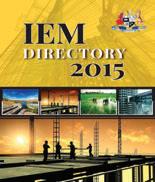
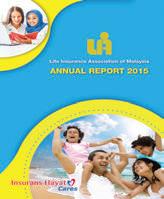







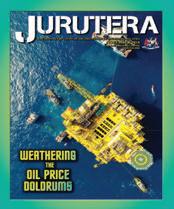

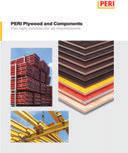







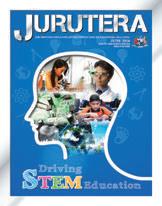
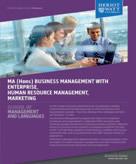


















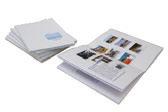






















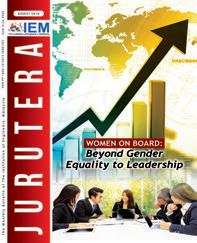

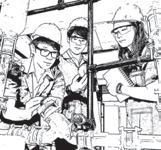





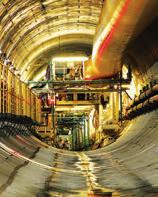

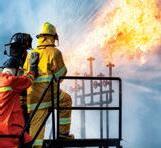

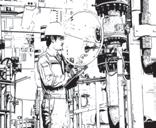
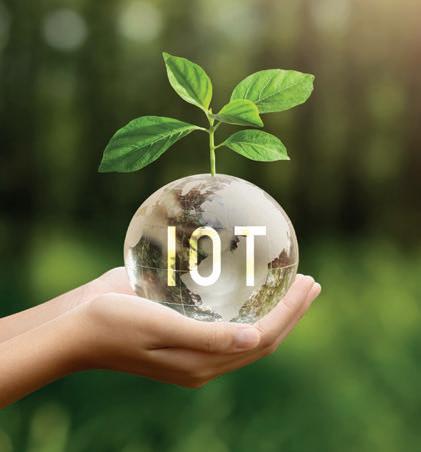







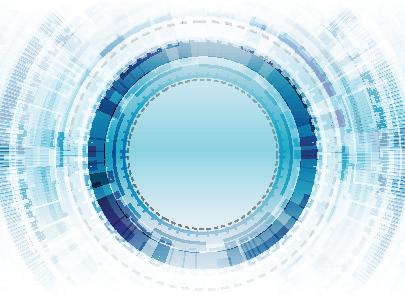




















The evolution of engineering education has always mirrored the technological zeitgeist, and, as the world grapples with unprecedented environmental challenges, there’s an urgent call to steer this education towards sustainability. Amidst this backdrop, Artificial Intelligence (AI) emerges, not just as a tool of convenience but also as a critical ally in the quest for eco-innovation. This article delves into the transformative potential of AI in reforming the engineering curricula, thereby empowering future engineers to be the harbingers of a sustainable future.
First, let us define “eco-innovation”. Eco-innovation refers to the creation of novel solutions and practices that not only improve environmental sustainability but also foster economic growth. It’s about finding innovative ways to protect our planet while advancing human well-being.
Today’s engineering feats are a symphony orchestrated by AI, playing a pivotal role from conception to execution. In energy sectors, AI algorithms optimise grid operations to integrate renewable sources seamlessly. The transportation industry leverages AI for smart traffic management, reducing congestion and emissions. Manufacturing is witnessing a renaissance with AI-driven predictive maintenance, minimising waste and extending the life of machinery. These instances epitomise AI’s capability to champion efficiency and sustainability, carving a path for what can be termed “intelligent engineering”.
Let’s explore why AI integration in engineering education is crucial for eco-innovation:
1. Ground-Level Impact: AI integration in engineering education transforms students into tech-savvy, impactdriven engineers. They move beyond being textbook engineers to become holistic problem solvers, equipped with the breadth and depth of AI. This shift empowers them to generate groundbreaking ecoinnovative ideas, addressing global sustainability challenges.
2. Sustainable Design: AI can significantly amplify sustainable design principles in engineering projects. For instance, in the design of energy-efficient buildings, AI models simulate countless variations to arrive at the most sustainable option. In manufacturing, AI can optimise material use, cutting down on waste and conserving resources. By embedding AI into the design phase, engineers can predict environmental impacts and devise strategies to mitigate them, ensuring that projects are sustainable by design.
3. Hands-on Training: Theoretical knowledge of AI alone won’t suffice. There must be an emphasis on hands-on training, where AI isn’t just a subject but a tool that students wield with confidence. AI-driven labs, workshops focused on real-world problems and sustainability-centric projects can provide the experiential learning essential for understanding AI’s practical applications in sustainable engineering. Engineering education stands at the crossroads, offering an opportunity to redefine its purpose and impact. Traditionally, engineering has been perceived as a discipline that imparts technical knowledge and skills, producing engineers who excel in problem-solving within the confines of known parameters. However, in today’s rapidly evolving world, the role of engineers extends far beyond conventional boundaries.
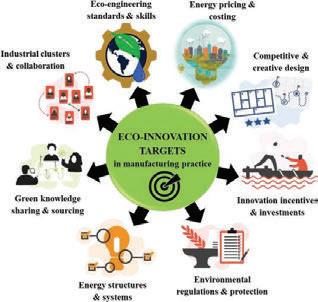
Typical example of eco innovation targets in a manufacturing practice (Source: Eco-innovation strategy in manufacturing: A systematic review1)
Modern engineers are a dynamic force, not limited to the technical realm but are, instead, deeply integrated into the broader fabric of society. They are tech-savvy, equipped with the knowledge and tools to harness the power of AI, which has become ubiquitous in our interconnected world. These engineers understand that solutions to complex challenges require more than theoretical expertise; they demand practical, innovative and sustainable approaches.
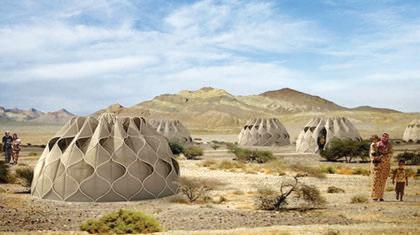
By embracing AI as an integral part of the curriculum, institutions can create an environment where students transcend traditional boundaries. Engineers, once confined to their specialised domains, can now become interdisciplinary problem solvers. They collaborate across fields, working alongside data scientists, environmentalists and social scientists to address multifaceted challenges.
This transformation enables engineers to be pioneers of eco-innovation. They don’t merely seek technical solutions but they also envision holistic approaches that balance environmental sustainability, economic viability and societal well-being. With AI as their ally, they simulate, analyse and optimise solutions that minimise ecological footprints, reduce waste and enhance resource efficiency.
The integration of AI into engineering education isn’t just an academic upgrade; it’s the vision for a sustainable future. These engineers become change-makers who actively contribute to solving the world’s most pressing problems, from climate change to resource scarcity. They are the architects of smart cities, the innovators behind renewable energy breakthroughs and the leaders in sustainable manufacturing.
In essence, this redefined engineering education nurtures impact-driven engineers. They are driven by not only technical prowess but also by a deep sense of responsibility toward the planet and its inhabitants. They are equipped to tackle global sustainability challenges head-on, armed with AI capabilities to analyse vast datasets, model complex systems and to propose ingenious solutions.
Incorporating AI into the engineering curricula is not without its challenges. Updating course content, training faculty and securing resources are significant hurdles. But the opportunities for institutions which overcome these challenges are vast. Graduates proficient in AI will not only be in high demand but they will also drive the sustainable transformation of the industry. They will be the ones developing smarter cities, more efficient transportation and production processes that are not just lean but green.
Some institutions have already taken the leap. The Massachusetts Institute of Technology (MIT) offers courses that intertwine AI with sustainable urban planning. Stanford University’s engineering programmes incorporate AI in environmental system analysis. These case studies exemplify the successful marriage of AI and sustainability in education, offering blueprints for others to follow.




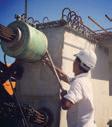
Nehemiah-OVM provides the following products and services:
- Post-tensioning solution provider
- Carpark Flat Slab
- Transfer Plate
- Beams, Box Girders
- Alternative design solutions
- Cable systems (stay cable, main cable, hanger)
- Bridge bearing and expansion joint
- Construction solutions (heavy lifting, ILM, etc)
- Monitoring repairing and strengthening for structures




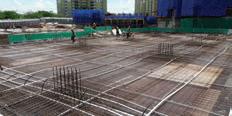
No. 45-3, Jalan PJU 5/20 Nehemiah Prestress Sdn Bhd (1140945-A)
The Strand, Kota Damansara 47810 Petaling Jaya
Selangor Darul Ehsan
Tel : 603 6142 6638
Fax : 603 6142 6693

Email : enquiry-pt@nehemiah-grp.com


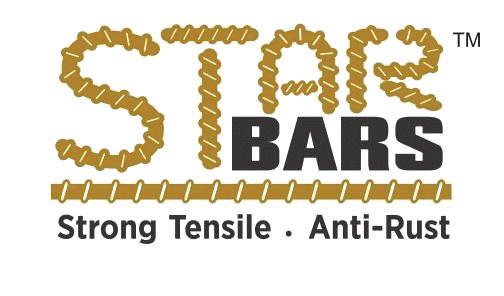


STARBARS ARE:
1. GLASS FIBRE REINFORCED POLYMER (GFRP) BARS
2. CHEAPER BY 15% COMPARED TO STEEL
3. CORROSION RESISTANCE
4. 2X HIGHER TENSILE STRENGTH
5. 4X LIGHTER THAN STEEL
6. NON-CONDUCTIVE TO THERMAL AND ELECTRICAL
7. 70% CARBON EMISSION REDUCTION
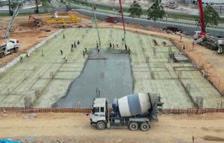
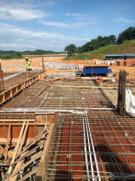
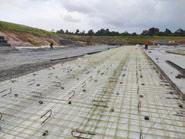






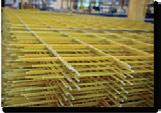
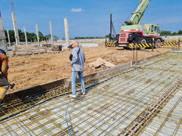
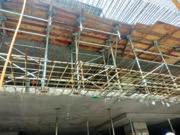
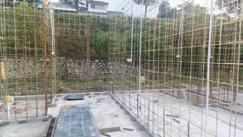







As we look ahead and envision a world where sustainability is not a choice but a necessity, engineering education becomes the crucible in which eco-innovators are forged. By embracing AI and fostering a culture of interdisciplinary collaboration, institutions can produce engineers who are not only proficient in their fields but who also possess the vision and adaptability to drive eco-innovation. Together, they are the architects of a sustainable future, where technology and humanity will coexist harmoniously.
[1] N.A. Janahi, C.M. Durugbo, and O.R. Al-Jayyousi (2021) Eco-innovation strategy in manufacturing: A systematic review. Volume 5, 2021,100343, ISSN 2666-7908, https://doi. org/10.1016/j.clet.2021.100343.
[2] https://www.springwise.com/disaster-shelters-refugees-mix-traditional-nomadic-designsustainable-technology/
Prepared
by:




The BH Girder is an innovative and enhanced version of PSC Girder that utilizes the Bulb-T shape integrated with Half Slab which enables it to be applied over a span of longer than 60m. By adopting the latest cutting-edge technologies and innovati on, the BH Gir der has been designed to achieve the ultimate goals of “ Cost Effectiveness ”, “ Rapid Construction”, “Aesthetics” and “Safety”.

Dr Praveena Nair Sivasankaran
Senior lecturer at the School of Engineering, Taylor’s University and the recipient of Malaysia’s Women Leaders Award.
IEM Council and Management would like to extend our heartiest congratulations to Ir. Assoc. Prof. Dr Wong Yew Hoong for being awarded the Anugerah Tokoh Muda Kejuruteraan Negara 2023 by the Board of Engineers, Malaysia in conjunction with “Hari Profesion Teknikal Negara 2023”.
IEM is extremely honoured to be elected to host the World Federation of Engineering Organisations (WFEO) Standing Technical Committee (STC) on Engineering for Innovative Technologies (CEIT) for four (4) years from 2023 to 2027.
Congratulations to IEM President, Ir. Prof. Dr Norlida Buniyamin on her appointment as the Chair of this STC.



Charting the Pathway towards Women Inclusivity in the Workplace
Date : 4 January 2024 (Thursday)
Time : 11.00 a.m. - 1.00 p.m.
Venue : Digital Platform
Approved CPD : 2
Speaker : Dr Thulasi

ciency


● Maximization of prestressing efficiency
● Minimization of prestressing friction loss
● Reduction of substructure cost
● Reduction of slab cost by half slab girder
● Omission of deck slab form work and s hori ng work by half slab girder
● Shorter construction period

● Design computations and analysis
● Construction drawings
● Material and c onstruction specifications
● Cost estimates
● Technical advice and c onstruction assistance
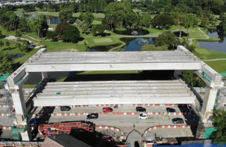
NEHEMIAH TOWOONG BRIDGETECH SDN BHD. No. 45-3, Jalan PJU 5/20, The Strand, Kota Damansara 47810 Petaling Jaya, Selangor Darul Ehsan.
Tel : 012 218 6693( Tan CC)


Tel : 603 6142 6638
Fax : 603 6142 6693
Email : tancc@nehemiah-grp.com
Email : enquiry@nehemiah-grp.com
partnership of


Artificial Intelligence (AI) has become an integral part of the educational landscape, reshaping how we approach engineering education. In the context of the 4th Industrial Revolution, where technological advancements are transforming industries, integrating AI into the engineering curricula is not just a choice but a necessity as it will empower students and professionals to explore advanced technologies, streamline workflow and solve complex engineering problems with greater efficiency. In addition, exposure to AI tools prepares students for the evolving landscape of engineering practices.
This article delves into the various facets of AI in engineering education, exploring its integration into curricula, its role in skill assessment, its impact on laboratories, research and projects as well as implications in unveiling the skills of an AI engineer in future (Figure 1). AI engineers are the product of AIintegrated engineering curricula which involves embedding comprehensive understanding of AI concepts and practical skills into educational programmes.
problems. By doing so, institutions are not only ensuring that graduates are well-versed in AI technologies but are also facilitating a seamless transition from academic learning to practical implementation. AI is increasingly being integrated into engineering education to enhance learning experiences, provide personalised instruction and simulate real-world scenarios. Some examples of AI integration in the engineering curricula are Adaptive Assessments, Intelligent Tutoring Systems, Simulation and Virtual Labs and others.
A case study conducted by Baker and Smith[1] revealed that students exposed to AI concepts early on in their academic journey demonstrated a better understanding of how AI could be applied in engineering practices. Such findings highlight the importance of incorporating AI into foundational courses. Moreover, Johnson and Williams[2] discussed the challenges and opportunities associated with adapting engineering curricula for the AI era. The authors emphasised the need for a dynamic curriculum that can accommodate the rapid evolution of AI technologies. They suggested collaborative efforts between academia and industry to ensure that educational programmes remain relevant and aligned with industry demands.
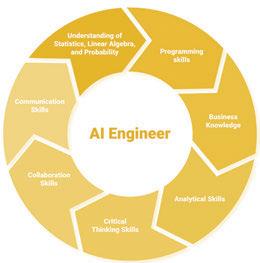
Figure 1: The skills of AI engineer in future (Source: https://www.artiba.org/blog/unveiling-theroles-of-ai-engineers-in-2021-and-beyond)
The integration of AI into the engineering curricula is a pivotal step towards preparing students for the demands of the modern workplace. Traditional engineering programmes are evolving to include AI-related courses, ensuring that students gain a foundational understanding of this transformative technology. This integration not only equips graduates with essential skills but also fosters a mindset that embraces innovation and adaptability, the prerequisites for success in the rapidly changing technological landscape.
The shift towards AI integration is evident in the restructuring of courses to include topics such as machine learning, data science and AI ethics. Educators are incorporating practical applications of AI in engineering disciplines, allowing students to work on real-world
AI-powered learning tools have revolutionised the educational experience for engineering students. These tools leverage machine learning algorithms to personalise content delivery based on individual learning styles and pace. Adaptive learning platforms, powered by AI, provide students with a customised learning path, ensuring that they master concepts before progressing to more advanced topics. The benefits of AIpowered learning tools extend beyond customisation. Realtime feedback mechanisms allow educators to track student progress and identify areas that require additional attention. This not only enhances the efficiency of teaching but also provides a data-driven approach to address the specific needs of individual students. As a result, AI is not just a tool for learning; it becomes a personalised guide for a student’s educational journey. Anderson and Smith[3] conducted a study on the impact of AI-powered learning tools in engineering education which showed that students using these tools exhibited higher levels of engagement and retention of complex engineering concepts. The study emphasised the potential of AI to bridge learning gaps and to provide additional support to students.
Traditional methods of skill assessment are undergoing a transformation with the incorporation of AI. Conventional exams often fall short in evaluating the diverse skill set required for modern engineering roles. AI-driven
assessment tools analyse a wide array of data points, providing a more comprehensive and objective evaluation of a student’s abilities. Machine learning algorithms enable these assessment tools to evaluate not only factual knowledge but also higher-order skills such as critical thinking, problem-solving and creativity. This holistic approach to assessment better aligns with the demands of the engineering profession, where practical application of knowledge is as crucial as theoretical understanding. Brown and Davis[4] conducted a study on the use of AI-based assessment tools to evaluate problem-solving skills in engineering students. It highlighted the efficiency and objectivity of AI in assessing complex problem-solving abilities, providing educators with a more comprehensive understanding of students’ strengths and areas for improvement.
In engineering laboratories, AI has evolved from a supporting role to a central position. Virtual laboratories, powered by AI simulations, provide students with a risk-free environment to conduct experiments and test theories. This not only enhances accessibility, allowing students to engage in experiments remotely, but also ensures a standardised experience across educational institutions. AI plays a crucial role in data analysis within laboratories. It assists students in deriving meaningful insights from experiments by processing and interpreting vast amounts of data. This not only enhances the learning experience but also mirrors the real-world application of AI in data-driven decision-making processes. Li and his team[5] investigated the enhancement of engineering laboratory experiences through AI and virtual reality. The study showcased how AI technologies simulated real-world scenarios, providing students with a hands-on experience that complemented traditional laboratory work. The authors emphasised the potential of AI to bridge the gap between theoretical knowledge and practical application. AI is being integrated into engineering labs to enhance experimentation, data analysis and overall efficiency.

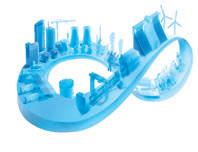









Some examples of how AI is applied in engineering labs are smart lab equipment, automated experimentation, virtual labs and remote experiments, collaborative research platforms, data analysis and visualisation tools and Laboratory Information Management Systems (LIMS). These specific applications of AI in university engineering laboratories demonstrate the diverse ways in which it is contributing to research, experimentation and education within academic settings.
In the realm of engineering research and projects, AI serves as a catalyst for innovation. Researchers leverage AI algorithms for complex simulations, optimisation processes and data analysis. The speed and efficiency offered by AI streamlines the research workflow, allowing engineers to focus more on the creative aspects of problem-solving rather than mundane tasks. Collaborative projects, often spanning across geographical locations, benefit from AI-driven tools which facilitate seamless communication and information sharing. This not only enhances the efficiency of collaborative efforts but also prepares students for the collaborative nature of engineering projects in the professional sphere. Zhang and Wu[6] delved into AI-driven innovations in engineering projects. The study showcased real-world examples where AI technologies, such as machine learning algorithms, were employed to analyse large datasets and to optimise project workflows. The research highlighted the transformative impact of AI on the decisionmaking processes within engineering projects. One of the real-world examples adopting AI technologies and machine learning can be clearly seen in engineering and design application to optimise product designs and manufacturing workflows to streamline product development, reduced prototyping costs and improved efficiency in engineering workflows.
As AI becomes increasingly ingrained in education, ethical considerations come to the forefront. The use of AI in decision-making processes, personalised learning and student assessments raises concerns related to bias, privacy and transparency. Educators must navigate these ethical








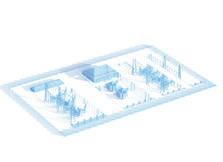
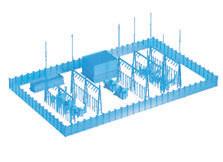
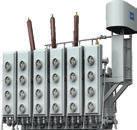









implications to ensure the benefits of AI do not come at the cost of fairness and equity. The bias inherent in AI algorithms is a significant concern, as it can perpetuate and even exacerbate existing inequalities. For example, if training data used to develop AI systems is biased, it can lead to biased outcomes, impacting certain demographic groups disproportionately. Striking a balance between the customisation benefits of AI and the need for ethical considerations is a challenge that educators and policymakers must address collectively. Floridi and Cowls[7] presented a unified framework of five principles for AI in society, emphasising the importance of transparency, accountability and inclusivity in AI applications. The authors argued that ethical considerations should be embedded into the design and implementation of AI systems to mitigate potential harm.
Adaptive learning, powered by AI, represents a significant stride towards personalised education. AI algorithms analyse individual learning patterns, preferences and performance data to tailor educational content to the unique needs of each student. While such customisation enhances engagement and comprehension, challenges such as data privacy and algorithmic bias must be carefully navigated. The customisation capabilities of AI in adaptive learning extend beyond content delivery. AI systems can adapt the learning environment itself, offering different modalities of learning based on individual preferences. For instance, some students may thrive in a visual learning environment while others prefer a more auditory approach. AI adaptability ensures that educational experiences can cater to diverse learning styles. Westera[8] conducted a systematic review of adaptive learning support in online
environments. The study highlighted the effectiveness of AI in adapting educational content based on individual progress, ensuring that students receive personalised challenges and support. The authors emphasised the potential of AI to enhance the overall learning experience in online environments.
The integration of AI raises questions about the future landscape of engineering jobs. While AI has the potential to automate routine and repetitive tasks, it simultaneously creates new opportunities for engineers. The emphasis shifts from manual, repetitive tasks to higher-order skills such as problem-solving, critical thinking and creativity — areas where human intelligence currently excels. The future engineer is expected to collaborate seamlessly with AI systems, leveraging their capabilities to enhance productivity and innovation. This paradigm shift necessitates a recalibration of educational curricula, ensuring that students not only acquire technical skills but that they also develop the ability to work alongside and guide AI systems effectively. Brynjolfsson and McAfee[9] discussed the business implications of AI, emphasising its potential to augment human capabilities rather than replace jobs. The authors argued that AI technologies, when integrated responsibly, could lead to new opportunities and created a more efficient and productive workforce.
Capstone projects, a cornerstone of engineering education, are undergoing a transformation with the integration of AI. These projects, often industry-sponsored or real-world problem-solving endeavours, now frequently involve the application of AI concepts. This evolution challenges students to think innovatively and to apply AI technologies to address complex, contemporary issues.
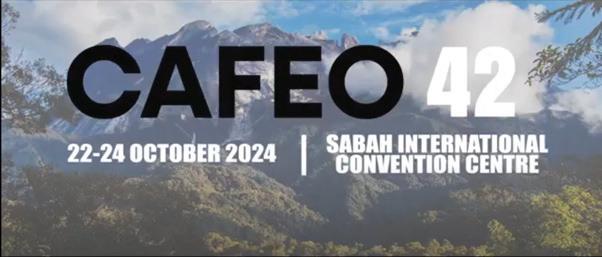
Conference of the ASEAN Federation of Engineering Organisations (CAFEO 42) to be hosted in Sabah, Malaysia

The IEM Sabah Branch has been selected to host the CAFEO42 in Sabah from October 22 to 24, 2024. It is a prestigious annual conference that brings together engineering professionals and experts from across 10 participating ASEAN countries as well as some other invited countries to exchange knowledge, experiences and best practices in the field of engineering. CAFEO attracts an impressive attendance of about 1,500 participants. Don’t miss it! Mark your calendar!
The integration of AI in capstone projects also bridges the gap between academic learning and practical application. It prepares students for the evolving demands of the professional sphere, where familiarity with AI technologies is becoming increasingly valuable. As a result, graduates not only possess theoretical knowledge but also have practical experience in leveraging AI for real-world solutions. AI can be implemented in engineering capstone projects to enhance the complexity, efficiency and innovation of the projects. Some real-world examples of the application of AI in engineering capstone projects are integrating the AI model with existing engineering systems or are designing new systems which incorporate the AI capabilities to ensure compatibility and seamless interaction between AI components and other engineering modules.
Chen and Hwang[10] explored trends in mobile technology-supported collaborative learning, providing insights into the evolving nature of collaborative projects. The study emphasised the role of mobile technologies, often integrated with AI, in fostering collaborative and innovative approaches in engineering capstone projects.
AI facilitates lifelong learning for engineers by providing continuous access to updated information and skill-building resources. Online platforms, powered by AI, curate personalised learning paths based on individual career goals and skill gaps. This ensures engineers will remain competitive and adaptable throughout their careers, especially in a landscape where technological advancements occur at an unprecedented pace. Lifelong learning is essential in the context of AIdriven technological disruptions. Engineers need to stay abreast of the latest developments, not only in their core engineering disciplines but also in AI-related technologies. AI-enabled platforms offer targeted learning experiences, allowing engineers to upskill or reskill efficiently based on industry trends and their evolving career trajectories. Barret and team[11] explored how universities could use AI to improve the student experience. The study discussed the potential of AI-driven systems to provide personalised learning paths, enabling engineers to engage in continuous learning tailored to their individual needs.
While the integration of AI in engineering education presents numerous advantages, it is not without its challenges and limitations. Accessibility is a significant concern, as not all educational institutions may have the resources or infrastructure to implement AI-driven technologies effectively. Furthermore, the digital divide can exacerbate existing inequalities, with students from underserved communities being left behind potentially. Another challenge lies in ensuring that AI algorithms used in education are unbiased and fair. If the training data for these algorithms contains biases, it can result in discriminatory outcomes, affecting certain student groups disproportionately. Addressing these challenges requires a concerted effort from educators, policymakers and technology developers to ensure AI benefits all students equitably.
As we look to the future, several trends and innovations are expected to shape the landscape of AI in engineering
education. The integration of AI with virtual reality (VR) and augmented reality (AR) is one such trend. VR and AR technologies offer immersive learning experiences, allowing students to interact with complex engineering concepts in a simulated environment.
Collaborative learning platforms, enhanced by AI, are another area of innovation. These platforms facilitate seamless communication and collaboration among students, regardless of geographical locations. AI algorithms support dynamic group formations based on complementary skills, ensuring that collaborative efforts yield optimal results. Davenport and Kalakota[12] discussed the potential for AI in healthcare, showcasing innovative applications that could inspire similar advancements in engineering education. The study emphasised the need for interdisciplinary collaboration and the integration of AI in diverse educational domains. Brynjolfsson and McAfee[9] identified key business implications of AI, discussing the potential for AI to drive innovation and reshape industries. The study encouraged educators and industry professionals to collaborate in identifying new opportunities for integrating AI in engineering education.
In conclusion, the integration of AI into engineering education represents a paradigm shift that extends across curricula, learning tools, assessments, laboratories, research and future job prospects. The benefits are multifaceted, from personalised learning experiences to enhanced skill assessments and innovative capstone projects. However, ethical considerations, challenges in implementation,



and the evolving nature of engineering jobs underscore the need for a balanced and proactive approach. As we navigate this AI-infused educational landscape, it is essential to prioritise inclusivity, responsibility and ongoing innovation. Striking a balance between customisation and ethical considerations, addressing challenges and staying abreast of future trends are crucial to prepare the next generation of engineers effectively. By doing so, we will ensure that AI serves as a catalyst for positive change, contributing to the continued evolution and excellence of engineering education.
[1] Baker, T., Smith, L., and Anissa, N. (2019). Educ-AI-tion Rebooted? Exploring the future of artificial intelligence in schools and colleges. London, NESTA.
[2] Johnson, M. S., and Williams, L. C. (2020). Adapting Engineering Curricula for the AI Era. International Journal of Engineering Education, 36(5), 1345-1357.
[3] Anderson, D., and Smith, P. (2018). Enhancing Engineering Education with AI-Powered Learning Tools. IEEE Transactions on Education, 61(3), 165-172.
[4] Brown, H. R., and Davis, S. M. (2017). Evaluating Engineering Students’ Problem-Solving Skills Using AI-Based Assessment Tools. Assessment & Evaluation in Higher Education, 42(6), 943-958.
[5] Li, M., Sun, Z., Jiang, Z., Tan, Z., and Chen, J. (2020). A virtual reality platform for safety training in coal mines with AI and cloud computing. Discrete Dynamics in Nature and Society, 2020, 1-7.
[6] Wang, Z., and Wu, D. T. (2023). The Digital Nexus: tracing the evolution of human consciousness and cognition within the artificial realm—a comprehensive review. AI & Society, 1-11.
[7] Floridi, L., and Cowls, J. (2019). A Unified Framework of Five Principles for AI in Society. Harvard Data Science Review, 1(1).
[8] Westera, W. (2019). Why and how serious games can become far more effective: Accommodating productive learning experiences, learner motivation and the monitoring of learning gains. Journal of Educational Technology & Society, 22(1), 59-69.
[9] Brynjolfsson, E., and McAfee, A. (2017). The Business of Artificial Intelligence. Harvard Business Review, 95(1), 100-107.
[10] Chen, Y., and Hwang, G. J. (2018). Trends in Mobile TechnologySupported Collaborative Learning: A Systematic Review of Journal Publications from 2006 to 2016. Computers & Education, 119, 129-143.
[11] Barrett, M., Branson, L., Carter, S., DeLeon, F., Ellis, J., Gundlach, C., and Lee, D. (2019). Using artificial intelligence to enhance educational opportunities and student services in higher education. Inquiry: The Journal of the Virginia Community Colleges, 22(1), 11.
[12] Davenport, T. H., and Kalakota, R. (2019). The Potential for Artificial Intelligence in Healthcare. Future Healthcare Journal, 6(2), 94-98.
Prepared by:

Ir. Ts. Dr
Nagentrau Muniandy
Senior lecturer at School of Engineering, Faculty of Innovation & Technology, Taylor’s University Malaysia.
Designing Hot Water Systems in 15 Minutes!
Game-Changer for Hotels and Hospitals
Date : 10 January 2024 (Wednesday)
Time : 5.00 p.m. - 7.00 p.m.
Venue : Wisma IEM
Approved CPD : 2
Speaker : Mr. Tee Tone Vei
PETRONAS Net Zero Carbon Emissions 2050 Pathway
Date : 13 January 2024 (Saturday)
Time : 9.00 a.m. - 11.00 a.m.
Venue : Digital Platform
Approved CPD : 2
Speaker : Dr Kuah Yong Cheun
Virtual Construction and How Does VR & AR Facilitate
Construction Site
Date : 13 January 2024 (Saturday)
Time : 10.00 a.m. - 12.00 p.m.
Venue : Digital Platform
Speaker : Mr. Su Yu
Technical Visit to SULRT3 Light Rail Transit Line 3
Underground (UG) Section
Date : 17 January 2024 (Wednesday)
Time : 8.00 a.m. - 12.30 p.m.
Venue : LRT3 UG Section VES and TPSS (near Bulatan Kayangan)
Approved CPD : 3
One Day Workshop on “Fiber to the Home Planning and Design”
Date : 17 January 2024 (Wednesday)
Time : 9.00 a.m. - 5.30 p.m.
Venue : Wisma IEM
Approved CPD : 6
Speaker : Mr. Asrul Nazrin Ahmad Nuruddin
Well Completion Engineering in the Oil & Gas Industry - What We Do
Date : 17 January 2024 (Wednesday)
Time : 3.00 p.m. - 5.00 p.m.
Venue : Digital Platform
Approved CPD : 2
Speaker : Ms. Asba Madzidah Abu Bakar
Energy Efficiency Initiatives in Malaysia
Date : 20 January 2024 (Saturday)
Time : 9.00 a.m. - 1.00 p.m.
Venue : Wisma IEM
Approved CPD : 2
Speaker : Ir. Ts. Zulkiflee Umar
In the global landscape, the surge in renewable energy (RE) adoption is not just a trend but a necessity driven by the urgent need to combat climate change and to reduce dependency on fossil fuels. RE sources such as solar, hydro and bioenergy have become key in energy transition, offering sustainable and cleaner alternatives to traditional energy sources in Malaysia. The advancement of smart grid technologies has further catalysed this shift, enabling more efficient and reliable integration of RE into existing power systems.
In supporting the Malaysia Energy Transition Outlook[1], Tenaga Nasional Berhad (TNB) and Sustainable Energy Development Authority Malaysia (SEDA), have launched an initiative aimed at simplifying the process of connecting to Renewable Energy (RE) sources while enhancing transparency in information sharing. Among the key components of this initiative is the publication of a list detailing the hosting capacity of available substations, referred to as Nodal Points, which serve as reference points for new RE projects seeking to connect to the TNB distribution grid, specifically at medium voltage levels
(33kV and 11kV). These play a crucial role in facilitating connections for projects operating under the Feed-in Tariff (FiT) and Net Energy Metering (NEM) programmes [3] (Refer https://www.seda.gov.my/download/tnb-nodal-points/).
In mid-2022, the more advanced and interactive hosting capacity analysis known as DG (Distributed Generation) Hosting Capacity Map was established by TNB for public access (Refer to Figure 1). The hosting capacity is generally defined as the amount of new production or consumption connected to the grid without endangering other customers’ reliability or voltage quality. The hosting-capacity approach for distributed generation was introduced as a transparent communication tool between stakeholders concerning the connection of distributed generation to the grid [4] .
The developed DG Hosting Capacity Map is delivered on the Geographic Information System (GIS) platform which transformed from the previous list of Nodal Points to cover the medium voltage network in the geographic map with a bird’s eye view of the Distributed Energy Resources (DER) connection point and capacity.
The DG Hosting Capacity Map offers visibility and facilitates the identification of the nearest potential substation for connecting new RE sources. For instance, it assists in determining which substation can accommodate a specific amount of RE development at a given location and time while adhering to the existing network conditions and operational criteria. This ensures that the introduction of new RE resources will not adversely affect critical factors such as safety, fault levels, voltage, power quality and reliability.
Using the DG Hosting Capacity Map, the public, especially RE developers, can pinpoint Nodal Points by entering specific parameters including the desired capacity in megawatts (MW), the prospective location for their new
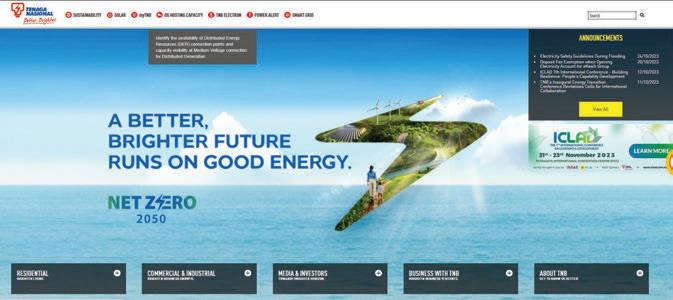
RE project, the radius from that location and the type of DG. In the sample case (Figure 2 and Figure 3), a user can easily search and view the DG solar-type hosting capacity within the Langkawi district boundary or a 30km radius of any coordinate/address as a preliminary connection point of the proposed DG plant.
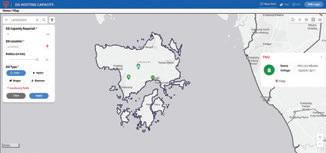
Figure 2: Searching functionality of the DG Hosting Capacity Map by district selection
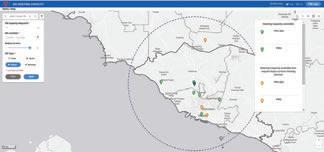
Figure 3: Searching functionality of the DG Hosting Capacity Map by coordinate/address
The easy-to-use and user-friendly application of the DG Hosting Capacity Map is delivered to the internal users of TNB and public users such as RE developers through the GIS platform powered with the latest data analytics technologies.
Before the DG Hosting Capacity Map project, retrieving input data from various legacy systems for the RE application was time-consuming as TNB staff members were required to manually extract data each time. With the DG Hosting Capacity Map system, the public can now directly get the required information from the system faster and with more transparency.
The DG Hosting Capacity Map accelerates DG interconnection determinations, aiding swift RE deployment aligned with the Malaysian Government’s goals. It supports the TNB commitment to achieving netzero emissions by 2050, contributing to its Sustainability Pathway 2050 (SP2050). The DG Hosting Capacity Map aims to boost the Smart Grid Index (SGI) to a score of 85 by 2025 through technology and digital solutions, aligning with its net-zero pledge. TNB is actively addressing ESG risks, integrating measures into operations. The GISbased DG Hosting Capacity Map enhances financial performance, ensuring ROI by minimising site visits
and reducing dependency on TNB personnel, thereby improving data transparency and DG productivity through automated processes.
For more information about Smart Grid in TNB, please visit: https://www.tnb.com.my/smart-grid/ and, to explore the DG Hosting Capacity Map, you may reach the application through: https://dghostingcapacity.tnb.com.my/DGHostingApp/
[1] IRENA (2023), Malaysia Energy Transition Outlook, International Renewable Energy Agency, Abu Dhabi.
[2] SEDA (2021), Malaysia Renewable Energy Roadmap, Sustainable Energy Development Authority. Available online: https://www.seda. gov.my/reportal/wp-content/uploads/2022/03/MyRER_webVer3.pdf
[3] SEDA (2021), TNB Nodal Points, Sustainable Energy Development Authority.
[4] Math H. J. Bollen ID and Sarah K. Rönnberg (Jul 2017), Hosting Capacity of the Power Grid for Renewable Electricity Production and New Large Consumption Equipment.
Prepared by:



Ir. Prof. (Adj.) Ts. Zahari Dollah
Head of Asset Management Department, Distribution Network at TNB.
Ir. Ts. Muhamad Had Kadir
Project Lead, Geographic Information System, Distribution Network at TNB.
Ir. Ts. Hasliana Mohamad
Subject Matter Expert, Geographic Information System, Distribution Network at TNB.
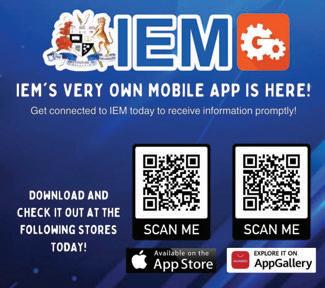



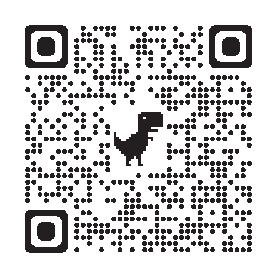
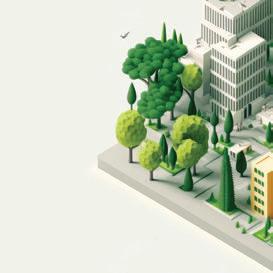







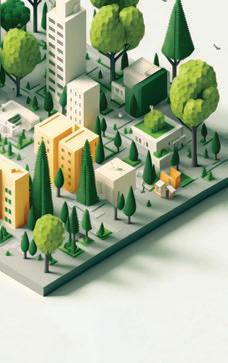

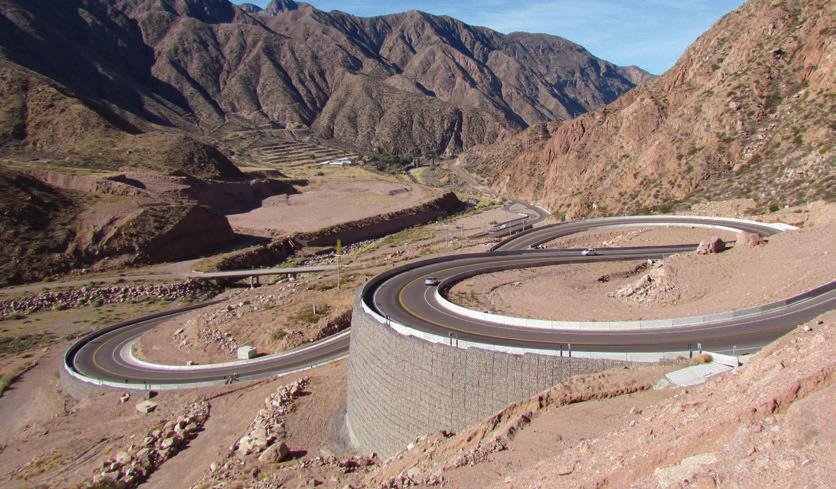



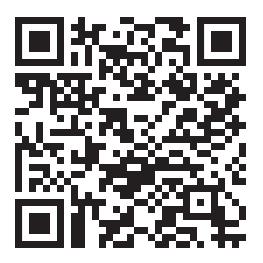

On 9 March 2023, the Engineering Education Technical Division (E2TD) of The Institution of Engineers, Malaysia (IEM) organised a technical visit to Panasonic Appliance Air-Conditioning Malaysia Sdn. Bhd. (PAPAMY 2) in Section 23, Shah Alam, Selangor. There were 25 participants, comprising IEM members and final-year students from UOW Malaysia. They were led by E2TD Committee Member Ir. Ts. Zainon Sharmila Shamsuddin. The primary purpose of the visit was to gain an insight into the implementation of quality management systems in the consumer industry.
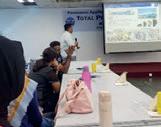
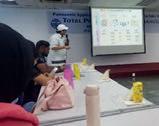
Panasonic Appliance Air-Conditioning Malaysia Sdn. Bhd. was established to manufacture rotary compressors and hermetic motors. Its products are designed and produced with the latest technology and the most advanced machines and robots. Coupled with its research and development capabilities, PAPAMY 2 is committed to meet a diverse and sophisticated range of global customer needs.
The half-day event started at 9.00 a.m. with a welcome speech by the Deputy Director of Indirect Manufacturing, Ms. Hamidah Hamzah, followed by a briefing on the company background by Mr. Mohd. Zakaria Mohd. Zain. The quality management system was explained by Mr. Hazarudin Mohamed Abas, the Assistant General Manager of the Quality Assurance Department.
Then, at around 10.30 a.m., the group went on a tour of the manufacturing plant. First, we visited the manufacturing plant on the ground floor where we learnt about the process and main quality management system
in the production of stator and rotor core for hermetic motors and compressor components.
Next we visited the assembly line on the second floor. Panasonic uses the latest technology, advanced machines and robot arms in the assembly of compressors and motors. It also uses various quality tools to closely monitor the quality performance and this is displayed on the noticeboard at the manufacturing plant. This shows that Panasonic is a company that prioritises precision and excellence in its products and demonstrates its commitment to quality assurance.
Our visit to PAPAMY 2 was an eye-opening experience that left a lasting impression. We walked away with a newfound appreciation for the ingenuity and dedication that underpinned the air-conditioning industry. Panasonic’s commitment to innovation, sustainability and quality has positioned them as a leader in the field and we are excited to see how their advancements will shape the future of air-conditioning technology. We extend our gratitude to the company and its representatives for their warm hospitality and for sharing their knowledge with us. Indeed, it was an invaluable opportunity to witness firsthand the passion and expertise that drove Panasonic’s success. The visit concluded at 1.00 p.m., leaving us inspired and enlightened by the strides made in air-conditioning technology.
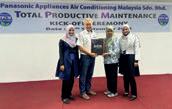
of appreciation
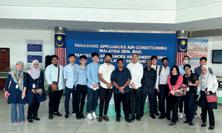
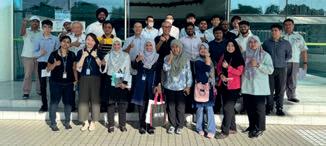
Prepared by:


On 17 October 2023, IEM’s Engineering
Education Technical Division (E2TD) organised a webinar talk titled CIDB Centralised Information Management System (CIMS): Application of CIDB Green Card, Renewal, Replacement, etc. There were 130 participants. The guest speaker was Haji Mohd Mazlan Mohamed Hassim, who had obtained his Mechanical Engineering Degree from Texas A&M University in 1991.
Haji Mohd Mazlan has years of industry experience and vast experience in using CIDB Centralised Information Management System (CIMS) for the application of CIDB green card, renewal, replacement, etc. He is a consultant in Performance Management System, Sales & Marketing, Safety & Health and has provided training related to these fields.
CIDB CIMS is an online one-stop centre specifically designed to facilitate contractors, construction personnel and other construction related bodies to obtain information on registered contractors and construction personnel with the Construction Industry Development Board (CIDB) and to get their certifications done through the system. The system integrates most CIDB operations and transaction processes and facilitates decision making processes. CIMS provides 17 different services.
Haji Mohd Mazlan started the talk by pointing out that the Laws of Malaysia Act 520, Session 33 (1) stated that “a person shall not be involved or engaged or undertake to be involved or be engaged as a construction personnel unless he is registered with the CIDB and holds a valid certificate of registration issued by the CIDB under this Act”. A compound penalty of RM5,000.00 will be imposed on the contractor and construction personnel respectively if the construction personnel is found to be without the CIDB green card during inspection. He then explained the details and functions of the CIDB green card as well as the procedures of application and registration with CIDB using CIMS links.
The speaker summarised the application process of getting the CIDB green card as follows:
1. Open an CIMS account (ensure that the Identity Card number and email address are correct).
2. Register with payment made and attend a 1-day short course on Safety Induction for Construction Worker.
3. Finally, apply for CIDB green card with payment made through CIMS. The card can be obtained within 1-3 months.
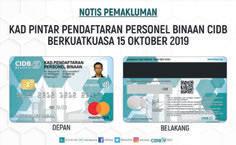
Hj. Mohd Mazlan then explained the many benefits of the CIDB green card which included:
The above coverage is limited to the owner of the Construction Personnel Registration card having attain the age of 16 until 70 years of age. The duration of coverage is 24 hours (including non-working hours) and covers all areas of the globe. Claims should be submitted within 60 days.
After the talk, there was a Q&A session with several queries from the participants and which Haji Mohd Mazlan answered in detail. The talk ended at 5.00 p.m.


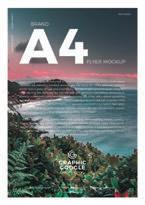


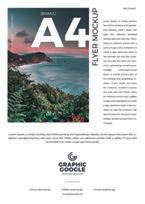



The Tan Sri Dato’ Seri Academician Ir. Prof. Emeritus Dr Chuah Hean Teik Engineering Education Prestige Lecture Series 2023 featured a captivating presentation titled Future of Engineering Education: Global Perspective. It was delivered by YBhg. Dato’ Ir. Prof. Dr Mohd. Hamdi Abd. Shukor. The event, held on 14 October 2023, gathered academicians, industry experts and engineering students.
Prof. Mohd. Hamdi’s lecture offered a comprehensive overview of the evolving landscape of engineering education in the context of a rapidly changing global environment. He emphasised the importance of adaptability and innovation in engineering pedagogy to meet the demands of emerging technologies and industries. He underscored the multiple challenges and limitations in engineering education to meet the new reality.
intelligence, data analytics and other cutting-edge technologies in reshaping engineering education. He advocated for a student-centric learning environment that fostered critical thinking, problem-solving skills and creativity towards education 4.0.
The lecture left a profound impact on the audience, sparking insightful discussions and encouraging a forward-thinking perspective in engineering education. The event concluded at 11.30 a.m.
The Engineering Education Prestige Lecture Series continues to serve as an invaluable platform for the dissemination of knowledge and intellectual exchanges in engineering education.

Furthermore, Prof. Mohd. Hamdi shed light on disruptive technologies such as mobile internet, artificial

6
7
8
In a heartwarming display of community empowerment, a STEM activity in Kampung Orang Asli Bukit Dugang, Dengkil, has illuminated the young minds with the wonders of Science, Technology, Engineering and Mathematics (STEM). The village has a population of approximately 180 and comprises families with various age groups.
Held on 19 March 2023 under the programme, Kampungku Bersih, Sepang Zone, the event was a collaborative effort between The Institution of Engineers, Malaysia (IEM) and the Department of Orang Asli Development, (JAKOA) Negeri Selangor & Wilayah Persekutuan. The turnout was most inspiring as children and teenagers from the village eagerly dived into a world of exploration, creativity and hands-on learning.
The aim was to create awareness on cleanliness and to promote STEM and robotics among the primary and secondary school students of the village. There were 8 volunteers from IEM, including 3 from the secretariat and 5 committee members of E2TD.
The event started with a welcome note by Mr. Mohamad Anis Othman, the Director of JAKOA, followed by a speech by Mr. Sani Sulong, the village headman of Kampung Bukit Dugang. To make the event more memorable, Ir. Ts. Ainon Shakila Shamsuddin gave tokens of appreciation to Mr. Sani and Mr. Mohamad Anis on behalf of the E2TD.
Then, the children took part in DIY Robot Hand, a series of interactive workshops which focused on robotic principles and the simple concept of engineering and design. The 30 children, aged 5-15, were very keen to engage in the activities which instilled in them crucial problem-solving and critical thinking skills; their obvious joy was reflected in their smiling faces.
With just three common items - straw, paper and stringthe children created a moving, bendable hand. The activity had a positive impact on them, especially on the exploration of robotics and creative thinking. They also demonstrated excellent teamwork and problem-solving abilities as they
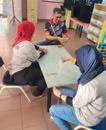
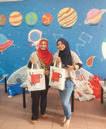
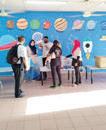
tackled the challenges to complete their task.
In particular, one event which captured the children’s imagination was a programmed robot demonstrated by Ir. Ts. Dr Nagentrau Muniandy and Ir. Ts. Dr Denesh Sooriamoorthy. The dance robot’s intricate movements and lively tunes enthralled the children and demonstrated to them the dynamic potential of robotics and automation in a fun and accessible way.

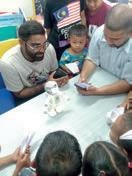


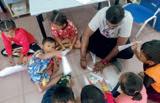
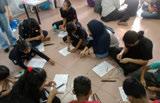
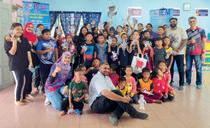
The success of the event served as a testament to the power of community-driven initiatives. By harnessing the collective energy and resources of passionate volunteers, communities like Kampung Orang Asli Bukit Dugang could overcome barriers to create meaningful opportunities for their children. The event was part of a stepping stone towards a brighter future for these young minds. The seeds of curiosity and knowledge planted during this initiative would hopefully blossom into a generation of empowered individuals ready to make their mark in the world of STEM.





In an effort to instill STEM (Science, Technology, Engineering & Mathematics) awareness in young students, The Institution of Engineers, Malaysia (IEM) and its Engineering Education Technical Division (E2TD) organised Program Celik STEM at Sekolah Kebangsaan Bukit Tampoi (A), Dengkil, on August 18, 2023.
Taking part in the programme were 5 instructors from the E2TD – Ir. Ainon Shakila Shamsuddin, Ir. Zainon Sharmila Shamsuddin, Ts. Nur Hasalli Ibrahim, Dr Praveena Nair Sivasankaran and Ir. Ts. Dr Nagentrau Muniandy – and Ms. Norimah from the IEM secretariat. A total of 60 students ranging from Year 4 to Year 6 took part in the event which not only served as a platform for students to explore the fascinating world of STEM but also highlighted the importance of these fields in shaping the future.

The programme started with a welcome address by Ms. Noresah Sapari (GPK Pentadbiran) followed by an icebreaking session lead by Ir. Nagentrau. Then Dr Praveena outlined the rules and objectives of the programme to the students. She explained that the aim was to stimulate their understanding of human body functioning, real-world robotic technology and principles of design. The programme seamlessly blended elements of STEM and art, providing a dynamic and engaging learning experience.
Ir. Ainon Shakila explained the instructions on how to build a robot arm. She said that building a paper robotic hand could be a fun and educational project that combined science, engineering and creativity. Students were divided into groups of five for the interactive events. Their task was to construct a moving and bendable robotic hand using paper, straw and string. This activity encouraged the exploration of robotics, engineering and creative thinking. Students were given 20 minutes to build the robotic hand and then to demonstrate it in front of the class.
Captured in these moments were students articulating their dreams and aspirations for their future careers before the end the session. Three students delivered brief speeches
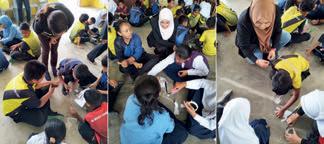
on their aspirations. Their impassioned speeches reflected not only their ambitions but also their bright potential. These young minds were those of future innovators, leaders and change makers, so their determination served as a powerful reminder of the boundless possibilities that awaited them.
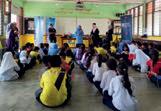
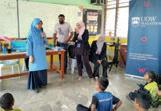
Programme at
Bukit
(A), Dengkil left an indelible mark on both students and volunteers. By providing a platform for hands-on exploration, insightful discussions and exposure to cutting-edge technologies, it ignited a passion for STEM in the hearts of the young learners. With events like these, we can look forward to a future where the innovators of tomorrow will be well-equipped to tackle the challenges and opportunities of our rapidly evolving world. The event concluded at 12.30 p.m., leaving a trail of inspiration and knowledge that would undoubtedly shape the future of these bright young minds.
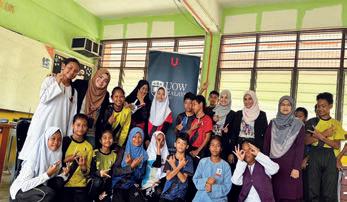
Prepared by:


The Faculty of Engineering & Computing in First City University College, under the leadership of its Dean, Ir. Mah Siew Kien, and Mechanical Lecturer Ir. Ts. Sukhairul Nizam Abdul Razak, who also served as a committee member of E2TD in IEM, organised a 3-day training programme titled Training for Lecturers (Preparation for Audit) on 26-28 April 2023. Conducted by IEM, it was attended by both lecturers and supporting staff of First City University College. The primary objective was to equip participants with the knowledge and skills necessary to meet the rigorous academic audit standards established by relevant educational authorities and accreditation bodies. The facilitators were Ir. Dr Balamurugan Annamalai Gurunathan, Ir. Dr Siti Hamzah, Ir. Ts. Dr Dhakshyani Ratnadurai, Ir. Assoc. Prof. Dr Saiddi Ali Firdaus Mohamed Ishak, Ir. Assoc. Prof. Dr Baljit Singh Bhathal and Ir. Assoc. Prof. Dr Siva Kumar Sivanesan.
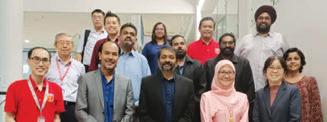
Training Programme Content
The training programme key components:
1. Introduction to Academic Audit Standards: The programme commenced with an introduction to the various academic audit standards set by relevant accrediting bodies, highlighting their significance in maintaining educational quality.
2. Documentation & Reporting: Participants were guided through the requirements for documentation and reporting in the context of academic audits, with a strong emphasis on the need for precision and clarity in record-keeping.
3. Curriculum Review & Enhancement: The training provided valuable insights into methods for reviewing and enhancing curricula to align with the latest academic audit standards and industry requirements.
4. Assessment & Evaluation: The programme delved into best practices related to assessment and evaluation methods, with a special emphasis on the importance of conducting fair and valid assessments.
5. Teaching Methodologies: Training sessions included in-depth discussions on innovative teaching methodologies designed to improve the overall learning experience while adhering to audit standards.
The training programme utilised a combination of instructional methods, such as lectures, group discussions, case studies and hands-on exercises. These interactive sessions fostered active participation and knowledge sharing among the lecturers and supporting staff.
There were several positive outcomes, such as:
1. Improved Understanding of Audit Standards: Gained a comprehensive understanding of academic audit standards and their role in maintaining educational quality.
2. Enhanced Documentation Skills: Improved their documentation skills, ensuring that records and reports met the stringent requirements of academic audits.
3. Curriculum Alignment: Lecturers learned how to align their course curricula with the latest industry trends and academic audit standards, ensuring relevance and excellence.
4. Assessment Expertise: Enhanced the participants’ knowledge and skills in designing fair and valid assessments, contributing to better evaluation processes.
5. Innovative Teaching Techniques: Acquired new teaching methodologies that promoted engaging learning environments, meeting audit standards while enhancing the overall educational experience.
Building on the success of the programme, recommendations are:
1. Ongoing Training: Implement continuous training to keep lecturers and staff updated on the latest audit standards and best practices.
2. Internal Audit Procedures: Develop internal audit procedures within the institution to ensure ongoing compliance with audit standards.
3. Support: Offer ongoing support, including resources and guidelines, to help lecturers and staff maintain accurate documentation.
4. Dissemination of Knowledge: Encourage participants to share the knowledge gained with their colleagues and to integrate it into their teaching and administrative practices.
The Training has proven to be highly beneficial. It has equipped lecturers and supporting staff with the knowledge and skills needed to meet academic audit standards, underscoring First City University College’s dedication to providing quality education and its commitment to continuous improvement.
Prepared by:

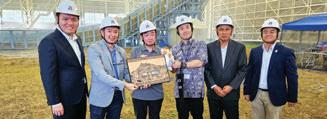
Among the key stops were:
• National Institute for Earth Science & Disaster Prevention (NIED): We explored their advanced research, which included the world’s largest rainfall simulator and slope stability assessments. We discovered their contributions to global disaster risk reduction efforts.
• Public Work Research Institute (PWRI) & ICHARM
The technical study tour to Japan on 9-16 October 2023 was a joint initiative between the Public Work Department (PWD) Sabah and the Sabah Branch of The Institution of Engineers, Malaysia (IEM). It was supported by the Disaster Preparedness & Prevention Centre (DPPC) and the Malaysia-Japan International Institute of Technology (MJIIT) at Universiti Teknologi Malaysia (UTM) Kuala Lumpur.
Japan is renowned worldwide as one of the best in the field of disaster risk reduction and resilience. With the aim to enhance the knowledge of engineers from Malaysia, especially those in the area of landslide prevention, slope management and disaster mitigation, this programme was realised under the leadership and close collaboration of Mr. Baharuhom KK Sogon (Deputy Director of Sabah PWD), Ir. Willy Chin Tet Fu (Branch Chairman of IEM Sabah) as well as Y.Bhg. Dato’ Zakaria Mohamad and Dr Khamarrul Azahari Razak (both from DPCC, MJIIT at UTM).
The 30 participants visited reputable engineering facilities, organisations, research centres and project sites known for their success in slope stabilisation, slope management, infrastructure development, seismic technology and water-related disaster risk reduction.
- The International Centre for Water Hazard and Risk Management: We witnessed innovative projects that tackled slope failures, landslides and debris flow. We learnt about sediment-based disaster risk strategies.
• Asian Disaster Reduction Centre (ADRC) - Kobe Earthquake Memorial Museum: We built connections with the ADRC and learnt about risk governance and communication for a more resilient society.
During the visits, participants engaged in fruitful technical discussions, networking, on-site observations and engineering demonstrations. The primary goal was to gain insights into Japan’s approach to promoting risk-informed development.
The collaborative journey served as a valuable opportunity to enhance our understanding of disaster resilience. By drawing lessons from Japan’s expertise, we will be better equipped to make our communities safer and more secure.
Prepared by:


We are usually surrounded by various forms of noise, from bustling streets to the hum of workplace machinery. Despite being commonly disregarded, excessive noise poses significant health risks. Recognising the hazards, adhering to safety principles and abiding by the relevant regulations are pivotal to counteracting the detrimental effects of noise.
In Malaysia, laws have been established to mitigate the risks and to ensure a safer environment for the people. Defined as unwanted or excessive sound, noise is an omnipresent environmental pollutant that detrimentally affects human health. Beyond mere annoyance, prolonged exposure to high noise levels can result in hearing loss, stress, sleep disturbances and even cardiovascular issues. Understanding noise hazards is crucial to enacting preventive measures against their harmful repercussions.
Understanding noise hazards relies on assessing their intensity and exposure duration, typically measured in decibels (dB), as well as some vital terminologies such as excessive noise and noise exposure limit. Excessive noise means daily noise exposure level exceeding 82dB(A), daily personal noise dose exceeding 50 per cent, maximum sound pressure level exceeding 115dB(A) at any time, or peak sound pressure level exceeding 140 dB(C). Levels exceeding these limits pose a significant threat to hearing health. For instance, the noise from an industrial boiler (Figure 1) (over 115 dB) can cause lasting damage.

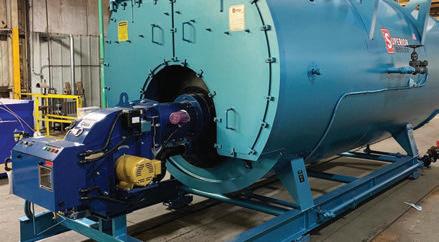
As for noise exposure limit (NEL), every employer shall ensure that none of his employees is exposed to:
a. The daily noise exposure level exceeding 85 dB(A) or daily personal noise dose exceeding 100 per cent
b. The maximum sound pressure level exceeding 115 dB(A) at any time or
c. The peak sound pressure level exceeding 140 dB(C).
Furthermore, sudden impulse noises like explosions can instantly harm hearing. Recognising these noise variations is crucial in adopting preventive measures to mitigate their adverse effects on health.
It’s essential to embrace the fundamental principles of noise safety when working with or around heavy machinery. The key measures for managing workplace noise include processes like identifying excessive noise, conducting a Noise Risk Assessment, providing

2: Sample of ear plug and ear muff (https://m.indiamart.com/proddetail/earplugs-and-ear-muffs-8447768088.html)
information, instruction, training and supervision, ensuring the use of Personal Hearing Protectors for workers, establishing Hearing Protection Zones, and implementing an Audiometric Testing programme.
The overarching strategy for controlling noise exposure involves a primary focus on reducing noise at its source. A comprehensive approach, encompassing risk identification, equipment and job redesign, as well as training and education, must be embraced to effectively manage the risks associated with occupational noise-induced hearing loss (NIHL) and other health effects related to noise.
The Hearing Conservation Programme (HCP) is a tailored
initiative designed to address the unique needs of an organisation and is aimed at preventing noise-induced hearing loss. Its objective is to minimise the risks associated with excessive noise exposure and to prevent NIHL, with the success contingent upon full commitment from the management and active worker involvement. To facilitate implementation, a Hearing Conservation Administrator (HCA) is appointed by the employer. Additionally, the HCP undergoes an annual review to ensure its ongoing effectiveness. The following are the main components of HCP:
1. Noise Risk assessment involves the identification of workers exposed to noise hazards and the noisy areas.
2. Noise Control Measures which include the Engineering, Administrative, and Personal Hearing Protectors Control approaches.
3. Audiometric testing, an annual test for all exposed workers to NEL (Figure 4).
4. Provision of information, instructions and training related to the importance of hearing protection.
5. Record-keeping to document HCP activities.
In Malaysia, noise-related regulations are outlined in various statutes,
emphasising the need to manage and control noise pollution for public health and welfare.
1. Environmental Quality Act 1974: This act provides provisions regarding environmental standards, including permissible noise levels in various settings to prevent noise pollution.
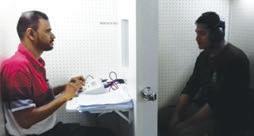
Figure 4: Example of audiometry test to monitor NIHL (https://www.posh.com.my/pos/wp-content/ uploads/2021/02/Mobile-Audiometric-Services.pdf)
2. In 2019, the Department of Occupational Safety & Health introduced new regulations on noise exposure, including the Occupational Safety & Health Regulation (Noise Exposure) 2019 and the Industries Code of Practice (ICOP) for Management of Occupational Noise Exposure and Hearing Conservation 2019. The new set of laws was introduced to replace the Factories & Machinery (Noise Exposure) Regulations 1989. The ICOP set a detailed guide to help employers comply with noise exposure and hearing conservation.
Noise safety is integral to preserving our well-being in various settings, from industrial workplaces to residential neighborhoods. Understanding the hazards posed by excessive noise, implementing safety principles, and complying with relevant laws are paramount in safeguarding against its harmful effects.

Figure 3: Industry Code of Practice (ICOP) for Management of Occupational Noise Exposure and Hearing Conservation 2019 is promulgated under Section 37 of the Occupational Safety & Health Act 1994 [Act 514] as a guidance to comply with the provisions of Occupational Safety and Health (Noise Exposure) Regulations 2019 (https://www.dosh.gov.my/index.php/legislation/codes-of-practice/industrial-hygiene/3286industry-code-of-practice-for-management-of-occupational-noise-exposure-and-hearingconservation-2019/file)
Prepared by:


Dear IEM Members,
We appreciate the passion and enthusiasm you have for the betterment of IEM. Today, we are reaching out to request a little bit of your time and thoughts on the IEM Resource Centre.
Scan the QR Code to access the questionnaire.
A mystery gift will be awarded to the 100th, 500th, 1000th, 1500th, 2000th, etc. Survey submissions until the closing date on 31 January 2024
Should you have any questions or additional suggestions, feel free to reach out to us at: pub@iem.org.my





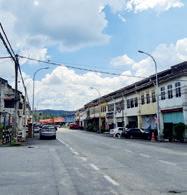
In the small, quiet town of Karai, Perak, is an iconic railway bridge that spans the Perak River. Construction of the bridge started in 1897 and it was completed in 1900 under the supervision of 2 British engineers G.W. Fryer and C.R. Hanson. It was inaugurated by the Perak Ruler, the late Sultan Idris Murshidul Azzam Shah in the presence of British Resident Sir Frank Swettenham.
Named after Queen Victoria, it was considered the largest bridge ever built in the East outside of India. It was fully functional for over 102 years and was used mainly for transporting rubber and coal. In 2002 the bridge was finally abandoned after a new double track railway bridge was erected next to it. Today the bridge has become a
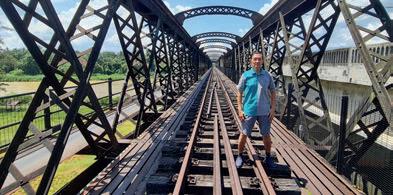
tourist spot where visitors stop to appreciate its unique design which is similar to that of the legendary bridge over River Kwai.
Though there is some displacement of tracks, the overall iron lattice girder structure remains intact, spanning 7 brick piers and stands 12m above the Perak River. The bridge measures 351m in length and 3.6m in width.
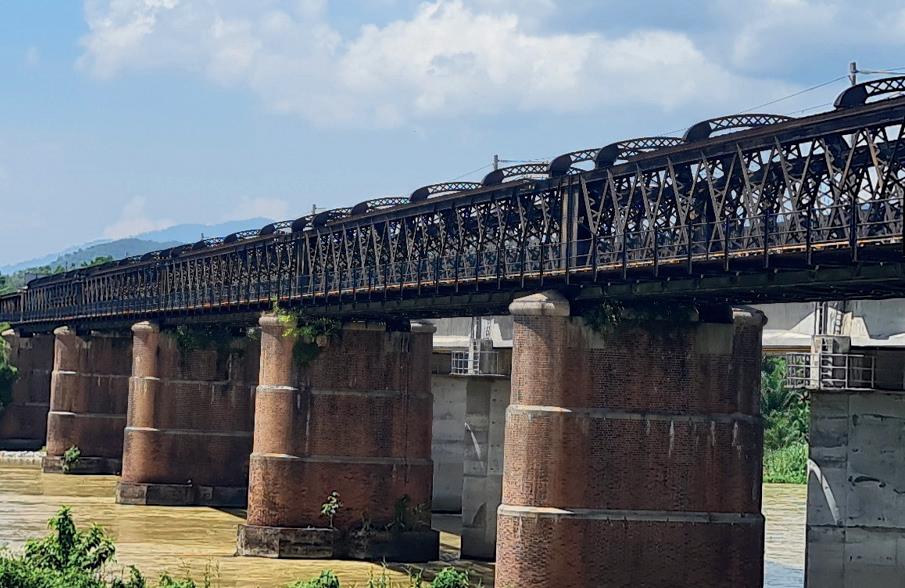


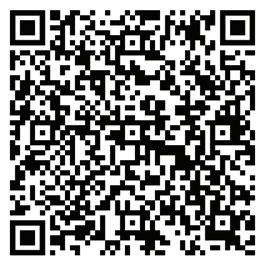
Temuduga Profesional
Kepada Semua Ahli,
Tarikh: 20 Disember 2023
SENARAI CALON-CALON YANG LAYAK MENDUDUKI
TEMUDUGA PROFESIONAL TAHUN 2024
Berikut adalah senarai calon yang layak untuk menduduki Temuduga Profesional bagi tahun 2024.
Mengikut Undang-Undang Kecil IEM, Seksyen 3.8, nama-nama seperti tersenarai berikut diterbitkan sebagai calon-calon yang layak untuk menjadi Ahli Institusi, dengan syarat bahawa mereka lulus Temuduga Profesional tahun 2023.
Sekiranya terdapat Ahli Korporat yang mempunyai bantahan terhadap mana-mana calon yang didapati tidak sesuai untuk menduduki Temuduga Profesional, surat bantahan boleh dikemukakan kepada Setiausaha Kehormat, IEM. Surat bantahan hendaklah dikemukakan sebulan dari tarikh penerbitan dikeluarkan.
Ir. Prof. Dr Zuhaina binti Zakaria Setiausaha Kehormat, IEM
PERMOHONAN BARU Nama Kelayakan
KEJURUTERAAN AWAM
MOHD SUHAIMI BIN ARIFFIN BE (UTM) (CIVIL, 2011)
KEJURUTERAAN ELEKTRIKAL
ONG BOON PO BE HONS (UNITEN) (ELECTRICAL AND ELECTRONICS, 2016) MSc (HERTFORDSHIRE) (MECHATRONICS, 2017)
HUANG XIANG EN BSc (INDIANA UNI-PURDUE) (ELECTRICAL, 2018)
PERMOHONAN MENJADI AHLI KORPORAT Nama Kelayakan
KEJURUTERAAN ELEKTRIKAL
BURHANUDDIN BIN OMAR BE HONS (ITM) (ELECTRICAL, 1997)
TAN WEN SHAN BE HONS (UMS) (ELECTRICAL AND ELECTRONICS, 2011) ME (UTM) (ELECTRICAL, 2013)
PERPINDAHAN AHLI
No. Ahli Nama Kelayakan
KEJURUTERAAN AEROSPACE
124134 SULAIMAN BIN KAMARULAZIZI BE (UPM) (AEROSPACE, 2008)
KEJURUTERAAN KIMIA
86024 RAFEQAH BINTI RASLAN BE (UTM) (CHEMICAL, 2005) MSc (UKM) (CHEMICAL & PROCESS, 2011) PhD (UTM) (2021)
KEJURUTERAAN AWAM
81596 LEE KAH YEE, VIVIAN BE HONS (UMP) (CIVIL, 2018)
56560 LEE YEN LONG BE (WALES) (CIVIL, 2002)
111141 LIM JIN KEONG BE HONS (USM) (CIVIL, 2016) ME (UTM) (STRUCTURE, 2019)
90762 LOW KIEN BOON BE (UTM) (CIVIL, 2012)
KEJURUTERAAN ELEKTRIKAL
33980 ARLEENEANSHAM @ LEE KIM SENG BE HONS (UMS) (ELECTRICAL AND ELECTRONIC, 2002)
77955 CHEW JEE XIONG BE HONS (UTAR) (ELECTRICAL AND ELECTRONIC, 2016)
35529 MOHD SAMIR ALMAN BIN SULAIMAN BE HONS (UNITEN) (ELECTRICAL AND ELECTRONICS, 2007) ME (UM) (COURSEWORK AND DISSERTATION, 2010)
KEJURUTERAAN ELEKTRONIK
123875 HO WAN CHUAN, PATRICK BE HONS (UTAR) (ELECTRICAL AND ELECTRONIC, 2009)
MSc (NOTTINGHAM) (ELECTRONIC COMMUNICATIONS AND COMPUTER, 2013)
114794 SOON KIAN LUN BE HONS (UM) (ELECTRICAL, 2015) PhD (MONASH) (2020)
PERPINDAHAN MENJADI AHLI KORPORAT
No. Ahli Nama Kelayakan
KEJURUTERAAN AWAM
61146 ANG VUI SIANG BE HONS (CURTIN) (CIVIL, 2012)
28604 LAU YUN ZI BE HONS (USM) (CIVIL, 2007)
112596 LOO HUI BSc (NATIONAL TAIWAN) (CIVIL,1998) PhD (UNIVERSITY OF HONG KONG) (2006)
32104 MOHD SAZALIE BIN RAMLEE BE HONS (USM) (CIVIL, 2008)
89520 MUHAMAD SYAKIR BIN ZULKAFLI BE (UTM) (CIVIL, 2012)
27590 SAMSUL IMRAN BIN BAHROM BE (UPM) (CIVIL, 2003) MSc (UPM) (STRUCTURAL, 2006)
44747 SHAHRIL ANWAR BIN AB WAHAP BE HONS (UTP) (CIVIL, 2011)
54244 ZAHARA BINTI YAAKOP BE HONS (UTP) (CIVIL, 2008)
KEJURUTERAAN ELEKTRIKAL
94634 LEE YENG YANG BE (BRADFORD) (ELECTRICAL AND ELECTRONIC, 2015) MSc (UMP) (ELECTRICAL POWER, 2019)
34082 MOHD SHAZWAN BIN MOHD YUSOFF BE HONS (UTM) (ELECTRICAL, 2010)
61088 MUHAMMAD FAISAL BIN MUHAMMAD YUSOFF BE HONS (UTHM) (ELECTRICAL, 2013)
42263 SARAVANA KUMAR A/L ARPUTHASAMY BE HONS (UPM) (ELECTRICAL AND ELECTRONICS, 2010) ME (UTM) (ELECTRICAL-POWER, 2015)
KEJURUTERAAN MEKANIKAL
74380 JACQUELYNE ANNE BOUDEVILLE BE HONS (UTHM) (MECHANICAL AND MANUFACTURING, 2018)
SENARAI PENDERMA KEPADA WISMA DANA BANGUNAN IEM
Institusi mengucapkan terima kasih kepada semua yang telah memberikan sumbangan kepada tabung Bangunan Wisma IEM. Ahli-ahli IEM dan pembaca yang ingin memberikan sumbangan boleh berbuat demikian dengan memuat turun borang di laman web IEM http://myiem.org.my atau menghubungi secretariat di +603-7890 0130 / 136 untuk maklumat lanjut. Senarai penyumbang untuk bulan November 2023 adalah seperti jadual di bawah:
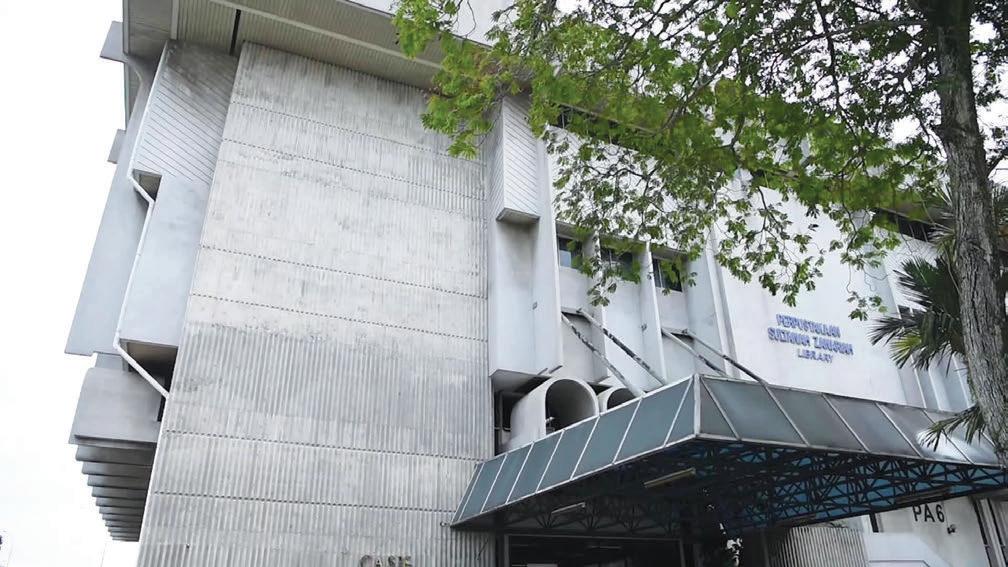

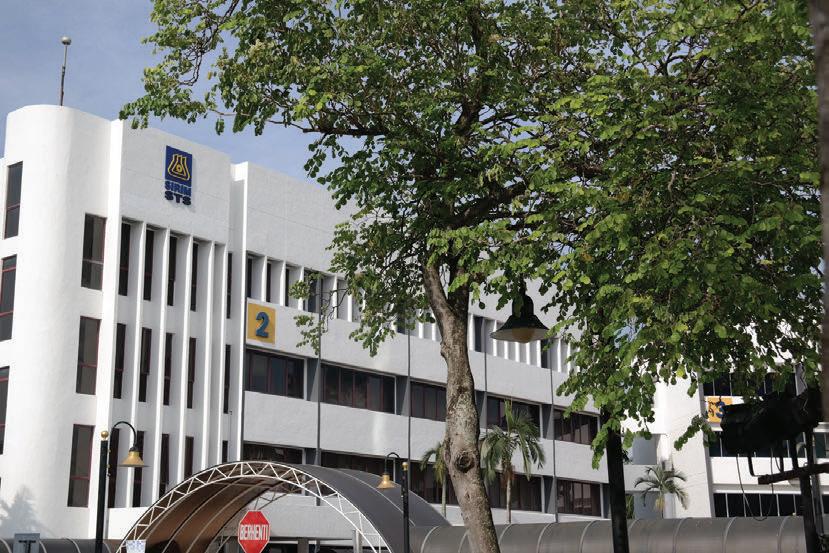
CONTINUATION FROM DECEMBER 2023 ISSUE
PEMINDAHAN AHLI KEPADA AHLI KORPORAT
No. Ahli Nama Kelayakan
KEJURUTERAAN ELEKTRIKAL
89305 LUM YAN WEI BE HONS (UTAR) (ELECTRICAL & ELECTRONIC, 2018)
86150 MAHADIR BIN MOHD TAZRIN BE HONS (UTeM) (ELECTRICAL (INDUSTRIAL POWER), 2010)
94159 MOHAMMAD ZULFHIAN NIZAM BIN JIKIRUN BE HONS (UMS) 9ELECTRICAL & ELECTRONICS, 2011)
114705 MOHD HAFIZI BIN YUSOF @ ABD TALIB BE HONS (UiTM) (ELECTRICAL, 2009)
57571 MUHAMAD MUSHIDI BIN MUSTAPA BE HONS (UiTM) (ELECTRICAL, 2007)
42151 NADIA ASYIKIN BINTI KASSIM BE HONS (UTP) (ELECTRICAL & ELECTRONICS, 2011)
101925 NADIA ZAHIRAH BINTI ABD RAJIED BE HONS (CURTIN) (ELECTRICAL POWER, 2009)
89685 NOORNADIAH BINTI ALIPAH BE HONS (UNISEL) (ELECTRICAL, 2012)
79604 OEH ZHE HAN BE HONS (UNITEN) (ELECTRICAL POWER, 2018)
95766 ONG YING TEIK BE HONS (UNITEN) (ELECTRICAL AND ELECTRONICS, 2017)
91011 RAJKIRAN SINGH A/L GURBACHAN SINGH BE HONS (UNITEN) (ELECTRICAL POWER, 2012) ME (UNITEN) (ELECTRICAL, 2016)
100663 SAN WEI JIAN BE HONS (MALAYA) (ELECTRICAL, 2017)
87404 VIGNESWARAN A/L M RATNAM BE HONS (UniMAP) (ELECTRICAL SYSTEMS, 2008)
104869 VOON YONG JIAN BE HONS (UPM) (ELECTRICAL & ELECTRONICS, 2018)
89023 WONG CHEK ING BE HONS (USM) (ELECTRICAL & ELECTRONICS, 2012)
81427 YEO JUE CHUAN BE HONS (SUNDERLAND) (ELECTRONIC & ELECTRICAL, 2015) ME (UM) (POWER SYSTEM ENGINEERING, 2018)
KEJURUTERAAN ELEKTRONIK
105501 AIRULL AZIZI BIN AWANG LAH BE HONS (MMU) (ELECTRICAL, 2002) MSc (UTP) (SYSTEMS ENGINEERING, 2019)
106118 CHIN KUI FERN BE HONS (UNIMAS) (ELECTRONIC & COMMUNICATION, 2000) ME (UNIMAS) (DIGITAL ELECTRONICS, 2004)
99445 MOHD RIDHWAN BIN BAHAROM BE (HIROSHIMA) (ELECTRICAL, COMPUTER AND SYSTEMS, 2010)
76080 PUTERI SARAH BINTI MOHAMAD SAAD BE HONS (UiTM) (ELECTRICAL, 2003) MSc (UKM) (MICROELECTRONICS, 2006) PhD (UiTM) (ELECTRICAL, 2014)
KEJURUTERAAN GEOTEKNIK
36287 DIANA BINTI CHE LAT BE HONS (MALAYA) (CIVIL, 2007) MSc (UiTM) (CIVIL (GEOTECHNIQUE), 2013) PhD (UTM) (CIVIL, 2021)
KEJURUTERAAN KIMIA
70023 KU MOHAMAD AFIQ BIN KU ARSHAD BE HONS (UTM) (CHEMICAL, 2017)
54324 YA MOHAMMAD NAZIR SYAH BIN ISMAIL BE HONS (UTM) (CHEMICALPOLYMER, 2009) Mphil (UTM) (CHEMICAL, 2019)
27972 ZAIRI BIN ZAINUDDIN BE HONS (UTM) (CHEMICAL, 2000)
KEJURUTERAAN KOMPUTER
56508 MARNI AZIRA BINTI MARKOM BE HONS (KUKUM) (COMPUTER, 2006) MSc (UNiMAP) (COMPUTER, 2009) PhD (UNiMAP) (MECHATRONIC, 2018)
KEJURUTERAAN MEKANIKAL
33897 ANUAR BIN BERO BE HONS (UTM) (MECHANICAL - MARINE TECHNOLOGY, 2001) ME (UTM) (MECHANICALMARINE TECHNOLOGY, 2009)
50671 CHIN PING SHOON BE HONS (CURTIN) (MECHANICAL, 2010)
54038 GOH HAN JIAN BE HONS (NOTTINGHAM ) (MECHANICAL, 2007)
80957 GOH ZHEN HWEE BE HONS (LEEDS) (MECHANICAL, 2008) ME (UTM) (MECHANICAL, 2014)
72584 LOH BOON CHUAN, ANDREW BE HONS (UNITEN) (MECHANICAL, 2008)
54300 MASDI BIN MUHAMMAD BSc (LEHIGH) (MECHANICAL, 1991) MSc (LEHIGH) (MANUFACTURING SYSTEMS, 1992) PhD (UTP) (MECHANICAL, 2012)
107596 MOHAMAD MASRIHAN BIN SIBOR BE HONS (UTM) (MECHANICAL, 2018)
52489 MOHAMMAD FAEIZ BIN ISMAIL BE HONS (UiTM) (MECHANICAL, 2006) MSc (LOUGHBOROUGH) (LOW ENERGY BUILDING SERVICES ENGINEERING, 2016)
45779 MOHD FAIZ BIN AHMAD SHAHROM BE HONS (UTP) (MECHANICAL, 2009)
32415 MOHD HASRUL HISYAM BIN CHIK BE HONS (UiTM) (MECHANICAL, 2010)
31425 MOHD ZAKARIA BIN MOHD SAHAR BE HONS (UiTM) (MECHANICAL, 2011)
42025 MOHMIN BIN SALIM BE HONS (UTM) (MECHANICAL, 2009)
64739 NG MIN HONG BE HONS (MONASH) (MECHANICAL, 2011)
89491 PREMKUMAR A/L VENGADASALAPATHY BE HONS (MMU) (MECHANICAL, 2007)
38822 SALIKKA A/P LIM CHUNG SENG BE HONS (MALAYA) (MECHANICAL, 2011)
49198 SIVA PERUMAL KONAR A/L JAGATHISEN BE HONS (UNITEN) (MECHANICAL, 2013)
105604 WANG HUI LER BE HONS (QUEENSLAND) (MECHANICAL, 2016)
KEJURUTERAAN PEMBUATAN
79575 NORHASHIMAH BINTI MOHD SHAFFIAR BE HONS (IIUM) (MANUFACTURING, 2002) ME (UTM) (MECHANICALADVANCED MANUFACTURING TECHNOLOGY, 2006) PhD (UTM) (MECHANICAL, 2012)
KEJURUTERAAN TELEKOMUNIKASI
87346 WONG WEI RU BE HONS (UM) (TELECOMMUNICATION, 2011)
PEMINDAHAN KEPADA AHLI (MELALUI PEPERIKSAAN PENILAIAN PROFESIONAL)
No. Ahli Nama Kelayakan
KEJURUTERAAN AWAM
38048 CHONG EU MEE, ELIZABETH BE HONS (UTM) 9CIVIL, 2005) ME (UTM) (CIVILTRANSPORTATION AND HIGHWAY, 2007) PhD (SWINBURNE) (2020)
26614 EZUAN BIN JAMADON BE HONS (UTM) (CIVIL, 2006)
42646 MOHAMMAD MASRUR BIN ABDUL AZIZ BE HONS (UTM) (CIVIL, 2010)
49870 MUHAMMAD RIZAL BIN RAZALI BE HONS (UTM) (CIVIL, 2010) ME (UPM) (WATER. 2013)
47873 SITI HAJAR BINTI MANSOR BE HONS (UTHM) (CIVIL, 2013) ME (UTHM) (CIVIL, 2016)
64649 TENGKU AMIR SHAH BIN TENGKU ALIM BSc (LOUISIANA AT LAFAYETTE) (CIVILL, 2012) MSc (UTP) (OFFSHORE, 2017)
KEJURUTERAAN ELEKTRIKAL
44150 EZWAN ARDIE BIN ZAIS BE HONS (UTM) (ELECTRICAL, 2004)
59896 HO CHEE WAI BE HONS (USM) (ELECTRICAL, 2012)
37780 MANURAAJ A/L KUNASEGARAV BE HONS (UNITEN) (ELECTRICAL POWER, 2012)
KEJURUTERAAN ELEKTRONIK
95825 SYAMSUL BAHREEN BIN MOHD SATAR BE HONS (UTM) (ELECTRICALELECTRONIC, 2006)
108002 TAN XION JIAN BE HONS (UniMAP) (BIOMEDICAL ELECTRONICS, 2016)
KEJURUTERAAN KIMIA
25771 AHMAD RAFIZAN BIN MOHAMAD DAUD BE HONS (UKM) (CHEMICAL & PROCESS, 1999) MSc (SHEFFIELD) (ENVIRONMENTAL & ENERGY, 2004) PhD (IMPERIAL) (2012)
23311 TAN JULLY BE HONS (UTM) (CHEMICAL, 2005) ME (UTM) (ENVIRONMENTAL, 2007) PhD (MALAYA) (2018)
KEJURUTERAAN MEKANIKAL
75332 ANG JEN KEN ME HONS (MECHANICAL, 2010)
109233 KAVILAN SADACHARAMANI BSc (IOWA STATE) (MECHANICAL, 2010)
52335 MOHD SHAZWAN BIN ABD KHALID BE (RAVENSBURGWEINGARTEN) (MECHANICAL (AUTOMOTIVE), 2010) ME (MALAYA) (MECHANICAL, 2014)
17900 PRABAKARAN A/L MANOGARAN BE HONS (OXFORD BROOKES) (MECHANICAL, 1996)
37914 YAU CHUAN SIM BE HONS (MALAYA) (MECHANICAL, 2008)
KEJURUTERAAN PROSES & MAKANAN
27315 SHOW PAU LOKE BE HONS (UPM) (PROCESS & FOOD, 2010) PhD (UPM) (BIOPROCESS, 2012)
PERMOHONAN MENJADI AHLI KORPORAT No. Ahli Nama Kelayakan
KEJURUTERAAN AWAM
118175 CASSIDY ANAK MORRIS BE HONS (UKM) (CIVIL & STRUCTURAL, 1998)
119033 EDDI ZAIMEE BIN ROMLI BE HONS (UTM) (CIVIL, 2001)
119668 FONG KIM WAI, EDWIN BE HONS (CURTIN) (CIVIL & CONSTRUCTION, 2012)
119669 HAZLAN BIN ABDUL RAHMAN BE HONS (UKM) (CIVIL & STRUCTURE, 2000)
119674 IZHAM BIN ASHAB @ IZHAB BE HONS (UTM) (CIVIL, 2000)
44153 LIOW SYUK CHIN BE HONS (USM) (CIVIL, 2006)
119307 MOHD SUHAIZAD BIN SAUTI BE HONS (UKM) (CIVIL & STRUCTURAL, 2004)
119671 MOHD TAHA BIN SUMAN BE HONS (UTM) (CIVIL, 2010)
119677 MUHAMAD AZRULANUAR BIN ZAKARIA BE HONS (UTM) (CIVIL, 2006)
119679 NUR HANIS BINTI HASSAN BE HONS (UiTM) (CIVIL, 2010)
119680 TAN CHEE KIAN BE HONS (CURTIN) (CIVIL & CONSTRUCTION, 2008)
KEJURUTERAAN ELEKTRIKAL
119313 ARMIZAN BIN MUHAMAD BE HONS (UiTM) (ELECTRICAL, 2001)
119032 MOHAMAD FARUQUE BIN M. ISHAN BSc (ALBERTA) (ELECTRICAL, 2015)
119035 MOHD SAFWAN BIN MOHAMAD BE HONS (UTeM) (ELECTRICAL (INDUSTRIAL POWER), 2014) MSc (UTeM) (ELECTRICAL, 2018)
119311 MUHAMMAD AFIQ FIKRI BIN ZAINAL BE HONS (UTeM) (ELECTRICAL (INDUSTRIAL POWER), 2013)
119314 MUHAMMAD ASYRAF BIN MOHAMAD BE HONS (UiTM) (ELECTRICAL, 2017)
119312 MUHD. HANIF TARMIZI BIN ABDUL HAJIS BE HONS (UiTM) (ELECTRICAL, 2012)
119310 SHAMSUL ARIFFIN BIN RAHAMAN BE HONS (UNISEL) (ELECTRICAL, 2009)
KEJURUTERAAN ELEKTRONIK
119036 ZAMRE BIN ABD GHANI BSc (UNIVERSITY OF THE PACIFIC) (ELECTRICAL, 1987) ME (UTM) (ELECTRICALMECHATRONICS & AUTOMATIC CONTROL, 2008) PhD (UKM) (ELECTRICAL, ELECTRONIC & SYSTEMS, 2014)
KEJURUTERAAN GEOTEKNIK
119672 ZULKIFLI BIN ISMAIL BE HONS (USM) (CIVIL, 2001)
KEJURUTERAAN MEKANIKAL
119675 MAT NIZI BIN MAMAT BE HONS (UiTM) (MECHANICAL, 2001)
119676 MOHAMAD NOR AMALLIL BIN MUSTAFA BE HONS (UM) (MECHANICAL, 2015)
119670 MOHAMAD ZAKI BIN MAHATHIR BE HONS (UTeM) (MECHANICAL (STRUCTURE & MATERIAL), 2008) ME (UMS) (OIL & GAS, 2018)
119031 MOHD AZIZUL HAKIM BIN ZAINAL ABIDIN BE HONS (UTP) (MECHANICAL, 2005)
119681 YEE CHE HSIEN BE HONS (CURTIN) (MECHANICAL, 2010)
PERMOHONAN MENJADI AHLI (MELALUI PEPERIKSAAN PENILAIAN PROFESIONAL)
No. Ahli Nama Kelayakan
KEJURUTERAAN AWAM
119673 ADY BIN ADNAN BE HONS (UTHM) (CIVIL, 2008)
112192 PANG TZE CHIN, TIMOTHY BE (KARLSRUHE UNIVERTY OF APPLIED SCIENCE) (CIVIL, 2012) ME (BEUTH UNIVERSITY OF APPLIED SCIENCE) (CIVIL, 2014)
KEJURUTERAAN ELEKTRIKAL
119678 NIK MOHD BAKHRY BIN ABU BAKAR BE HONS (UTM) (ELECTRICAL, 2000)
KEJURUTERAAN ELEKTRONIK
119034 MOHD SAIFUL BIN NASERI BE HONS (UiTM) (ELECTRONICS, 2012)
KEJURUTERAAN MEKANIKAL
119309 SURESH A/L TAREMELINGGAM BE HONS (UNITEN) (MECHANICAL, 2014)
KEJURUTERAAN PERLOMBONGAN
119308 PRAKASH TEOH BE HONS (USM) (MINERAL RESOURCES, 2004)
PEMINDAHAN KEPADA AHLI ‘SENIOR’ No. Ahli Nama Kelayakan
KEJURUTERAAN AWAM
32080 BRANDON SIM BE HONS (USM) (CIVIL, 2011)
26604 CHOO HUI SHIEN, ANNIE BE HONS (UTM) (CIVIL, 2006)
28090 LEONG WEI BOON BE HONS (USM)(CIVIL, 2007)
24577 LIOW CHEE HAW BE HONS (USM)(CIVIL, 2004)
65773 MOHAMMAD FAIZAL BIN AYOH BE HONS (UiTM) (CIVIL, 2014)
KEJURUTERAAN ELEKTRIKAL
47061 ANUAR BIN
SALEHHODIN BE HONS (MMU) (ELECTRONIC, 2005) CONVERSION PROG. (UNITEN)(ELECTRONICS TO ELECTRICAL, 2011)
KEJURUTERAAN MEKANIKAL
20634 JOLLIFFE ANAK NICHOLAS MUYA BE HONS (UiTM) (MECHANICAL, 2001)
37082 SHAMSUL ADLY BIN SAMSUDDIN BE HONS (USM) (MECHANICAL, 1998)
PERMOHONAN KEPADA AHLI ‘SENIOR GRADUATE’ No. Ahli Nama Kelayakan
KEJURUTERAAN ARKITEK NAVAL
118975 MUHAMMAD FAISAL BIN MUHAMAD HENDRI BE (UNI. OF ULSAN)(NAVAL ARCHITECTURE, 2010) MSc (PUSAN NATIONAL UNI.) (NAVAL ARCHITECHTURE & OCEAN ENRG, 2015)
KEJURUTERAAN AWAM
118971 IZHAN GOH BIN ABDULLAH @ GOH ENG TEW BE HONS (THE UNI. OF NORTH DAKOTA)(CIVIL, 1985)
119688 JUDE BINGKASAN BE HONS (UTM)(CIVIL, 2003)
119687 MOHAMAD HISHAMUDDIN BIN KADIR BE HONS (UTM)(CIVIL, 2013)
119659 MOSES DONGO MURANG BE HONS (UTM) (CIVIL, 2013)
119685 SUKIMAN B. SULONG BE HONS (UTM)(CIVIL, 2002)
119690 TONY FRANCIS MARCELLINUS BE HONS (MALAYA) (CIVIL, 2004)
KEJURUTERAAN ELEKTRIKAL
119809 MOHD NAZERI BIN JAMIL BE HONS (UTeM) (ELECTRICAL-INDUSTRIAL POWER, 2011)
119810 MOHD. RAZIF BIN ISMAIL BE HONS (UTeM) (ELECTRICAL-INDUSTRIAL POWER, 2008)
119678 MUHAMMAD AZLAN BIN AHMAD @ ABDUL RAHIM BE HONS (UMP) (ELECTRICAL-ELECTRONICS, 2012)
123727 ROZIYAANAH BINTI JILIN BE HONS (UTHM) (ELECTRICAL, 2009)
KEJURUTERAAN ELEKTRIKAL & ELEKTRONIK
119684 ABD RAJIED BIN HENRY BE HONS (PORTMOUTH POLY.) (ELECTRICAL & ELECTRONIC, 1983)
KEJURUTERAAN ELEKTRONIK
119683 KIRSNAAMURTHI A/L PONNUSAMY BE HONS (UNISEL) (ELECTRONIC, 2008)
KEJURUTERAAN KIMIA
119686 MUHAMMAD FARID BIN MAZLAN BE HONS (UTP)(CHEMICAL, 2013)
KEJURUTERAAN MEKANIKAL
119689 MOHD FAHMI BIN MOHD YUSOFF BE HONS (UKM) (MECHANICAL, 2009)
KEJURUTERAAN PEMBUATAN
118974 SITI NOR SYAZWANI BINTI RIDZUAN BE HONS (IIUM) (MANUFACTURING, 2014) MSc (UiTM)(MECHANICAL, 2020)
PERMINDAHAN KEPADA AHLI SISWAZAH No. Ahli Nama Kelayakan
KEJURUTERAAN KIMIA
101430 ANNWAR AFFENDI HANAFI BIN EFFENDIE BE HONS (CURTIN UNI.) (CHEMICAL, 2021)
98917 LEE HANG YUEN BE HONS (UMP) (CHEMICAL,2021)
69432 CHUNG CHEE YAP ME HONS (THE UNI. OF NOTTINGHAM) (CHEMICAL, 2017)
85536 TERRENCE JESSINDRAN ANTHONY BE HONS (UTAR) (CHEMICAL, 2018)
KEJURUTERAAN AWAM
102132 LEE CHEE CHIN BE HONS (UTAR) (CIVIL, 2022)
115315 LIM CHANG JET ME HONS (THE UNI. OF NOTTINGHAM) (CIVIL, 2022)
96206 TEOH JIONG ZAN BE HONS (UM) (CIVIL, 2021)
90310 TEOW KAR LOKE BE HONS (INTI INT. UNI) (CIVIL, 2020)
99095 JONATHAN, CHAI KUAN ZHAO BE HONS (SWINBURNE UNI. OF TECH.)(CIVIL, 2021)
95434 TRISHA ANAK ANTHONY JALIN BE HONS (UNIMAS)(CIVIL, 2020)
107515 LAI YI HOONG BE HONS (INTI UNI.) (CIVIL, 2020)
99614 LAI KOON YONG BE HONS (INTI INTER. UNI.) (CIVIL, 2018)
112658 HANIS EIZZATI BINTI AHMAD BE HONS (UiTM) (CIVIL, 2016)
86423 SITI HAJAR BINTI MOHAMAD RADZUAN
HONS (UPNM) (CIVIL, 2019)
80132 CHEAH WEI SZE BE HONS (UNITEN) (CIVIL, 2018)
80055 CHUAH JING MING BE HONS (PURDUE UNI.) (CIVIL, 2018)
90658 LEE CHONG HOE BE HONS (UMP)(CIVIL, 2019)
84723 LEONG GEOK WEN BE HONS (UM) (CIVIL, 2018)
77186 CHEE FONG, MAKE BE HONS (USM) (CIVIL, 2018)
99219 KENNETH BOO BENG WEE BE HONS (INTI INTER. UNI.) (CIVIL, 2018)
72292 DING YONG JIE BE HONS (UMP) (CIVIL, 2018)
107530 LIM SHU KOON BE HONS (UPM) (CIVIL, 2019)
91875 MUHAMMAD IZZUL ASYRAF BIN MOHD FUZI BE HONS (UTHM) (CIVIL, 2020)
69841 VIVI MERIANA LIAS BE HONS (UNIMAS) (CIVIL, 2017)
74811 YIP BAO FANG BE HONS (UTM) (CIVIL, 2018)
88931 SHUAIMI SYAFIQ B. HJ SAIZO BSc HONS (UMS) (CIVIL,2018)
68169 TUAN MUHAMMAD SYAHID BIN TUAN IBRAHIM BE HONS (UTHM)(CIVIL, 2017)
79221 VINCENT TOH ZING HUI BE HONS (SWINBURNE UNI. OF TECH.)(CIVIL, 2016)
81521 MOHD. ADHAN IZMI BIN ROSLAN BE HONS (UMP) (CIVIL, 2016)
71163 LOI SHI JUN BE HONS (UMP)(CIVIL, 2016)
83028 VIJAYA KUMAAR A/L ARNASALAM BE HONS (UTHM)(CIVIL, 2019)
50944 NUR SYAHIDAH BINTI JAMALUDIN BE HONS (USM) (CIVIL, 2015)
62860 RYAN WITHE B. HAMSAARI BE HONS (UTHM)(CIVIL,2021)
52987 SYLVIANA BINTI SULONG BE HONS (UMS) (CIVIL, 2014)
65738 AHMAD AFIQ AKHARI B. ADAM BE HONS (UiTM) (CIVIL, 2016)
47327 NOR ASYIDAH BINTI MOHD AHMADAN BE HONS (UTP) (CIVIL, 2014) ME (UTM) (CIVIL, 2021)
52139 MOHD ISMAIL BIN YUSUF BSc HONS (UNIMAS) (CIVIL,2015)
54784 KHAIRUL FASLAN BIN DARWIS BE HONS (UTHM) (CIVIL, 2015)
43317 JESSICA ARAPOC BINTI JESUS BE HONS (UMS)(CIVIL, 2011)
42648 NAZRUL EZWAN BIN PUNGOT BE HONS (UTHM) (CIVIL, 2011)
33194 NURUL AIN BINTI JAMARI BE HONS (UiTM) (CIVIL, 2012)
33443 JERRISLY BIN SULINDAP BE HONS (UiTM)(CIVIL, 2009)
33565 SAJID BIN SILADJAN BE HONS (UTHM)(CIVIL,2021)
26599 NAJMULHUDA BINTI IBRAHIM BE HONS (UM) (CIVIL,2006)
27917 LIONG KOOI PIAO BE HONS (UTM) (CIVIL, 2011)
KEJURUTERAAN ELEKTRIKAL
101867 MOHD YUSRAN B. MOHD YUNUS BE HONS (UNITEN) (ELECTRICAL, 2020)
92131 MUHAMMAD A'MIRULL BIN AHMAD FAUZI BE HONS (UTHM) (ELECTRICAL, 2020)
102737 YEAP SHENG YI BE HONS (UTeM) (ELECTRICAL, 2021)
88419 MUHAMMAD SAFWAN BIN DARUS BE HONS (UNITEN) (ELECTRICAL, 2020)
88633 KHO CHUN CHIAK, MELVIN BE HONS (SWINBURNE UNIVERSITY OF TECHNOLOGY) (ELECTRICAL,2020)
68054 ZECH CHAN SZE ZHER BE HONS (UTAR) (ELETRICAL & ELECTRONIC, 2018)
96322 JOSEPH ANDERWEE BE HONS (UTP)(ELECTRICAL, 2022)
62398 MUHAMMAD IMANUDDIN B. AHAMAD BE HONS (UTeM) (ELECTRONIC-WIRELESS COMMUNICATION, 2017)
48157 LAI LEE WEE BE HONS (INFRASTRUCTURE UNIVERSITY KUALA LUMPUR) (ELECTRONIC, 2012) CONVERSION PRORAMME (UNITEN)(ELECTRICAL, 2018)
44929 SITI SUFIAH BTE ABD WAHID BE HONS (UTM) (ELECTRICAL, 2012) ME (UTM) (ELECTRICAL, 2014)
34100 MASHITAH BINTI MOHD HUSSAIN BE HONS (UiTM) (ELECTRICAL, 2010) ME (UiTM) (ELECTRICAL, 2014)
KEJURUTERAAN ELEKTRONIK
105124 LOW CHEN YONG BE HONS (TARC)(ELECTRICAL & ELECTRONIC, 2020) 92417 JAYIANTHI SUPAMANAM BE HONS (NILAI UNI.) (ELECTRICAL & ELECTRONIC, 2020)
KEJURUTERAAN BAHAN
118383 LIM JIN XIANG BE HONS (TARC) (MATERIALS,2021)
KEJURUTERAAN MEKANIKAL
118288 HO CHEE HONG BE HONS (INTI INTERN. UNI.) (MECHANICAL, 2022) 118291 LIM KIEN GI ME HONS (HERIOTWATT UNI. MALAYSIA) (MECHANICAL, 2022)
118293 NG REN BIN ME (HERIOT-WATT UNI. MALAYSIA) (MECHANICAL, 2022)
118285 YEO RONG HONG BE HONS (INTI INTERN. UNI.) (MECHANICAL, 2022) 106045 LIEW MEENA BE HONS (USCI UNI.) (MECHANICAL, 2022) 97741 NORMEELAIVA BTE ALHUSSIEN BE HONS (CITY UNI.) (MECHANICAL, 2021) 99564 AHMAD FIKRI AISAMUDDIN MAZLAN BE HONS (UM) (MECHANICAL, 2020) 87317 CHOO CHENG WAI BE HONS (MONASH UNI. MALAYSIA) (MECHANICAL, 2019)
87776 MUHAMMAD SYAFIQ AIMAN BIN MUHAMMAD BAZLAN BE HONS (UNITEN) (MECHANICAL, 2019)
77387 NOOR AMEERA SHAHEERA BINTI RAZALI BE HONS (UTHM) (MECHANICAL, 2018) 75974 NUR AMIRAH BINTI JAMALUDDIN BE HONS (UiTM) (MECHANICAL, 2018)
55219 MUHAMMAD HAZEEM BIN KAMARUDDIN BE HONS (UTHM) (MECHANICAL, 2016)
74681 MUHAMMAD KHAIRUL ANUAR B. ABDOL SAMAD BE HONS (UiTM) (MECHANICAL, 2021)
66045 THIAGU A/L MANIAM BE HONS (UNISEL) (MECHANICAL, 2014)
30321 ZULHANAFI BIN PAIMAN BE HONS (UiTM) (MECHANICAL, 2008) ME (UTM) (MECHANICAL, 2015) PHD (UTM) (MECHANICAL, 2021)
19910 SIVASANKAR A/L SAMBASIVAM BE HONS (UPM) (MECHANICAL,2002) MSc (UPM) (MECHANICAL,2006)
69648 ABDUL PAIZAL B. MOHD ZAIN BE HONS (UTeM) (MECHANICAL-PLANT & MAINTENANCE, 2015)
KEJURUTERAAN MEKATRONIK
81067 NGIE KOK SIN BE HONS (A.P.U) (MECHATRONICS, 2018)
62922 AHMAD ADAM BIN A SAZALI BE HONS (UTeM) (MECHATRONICS, 2017)
KEJURUTERAAN PETROLEUM
89800 PUNISSHA BALASUBRAMANIAM BE HONS (CURTIN UNI.) (PETROLEUM, 2019)
Note: Continuation would be published in February 2024. For the list of approved “ADMISSION TO THE GRADE OF STUDENT”, please refer to IEM web portal at http://www.myiem.org.my.
